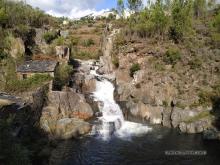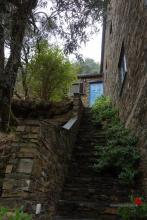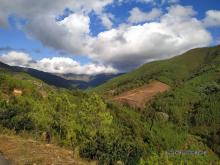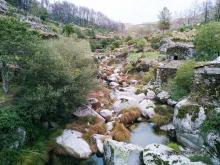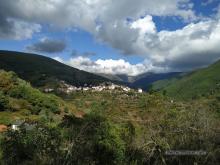Today we are leaving Vau, the next few days we will be visiting the Serra da Estrela Natural Park to get to know the Portuguese Beira.
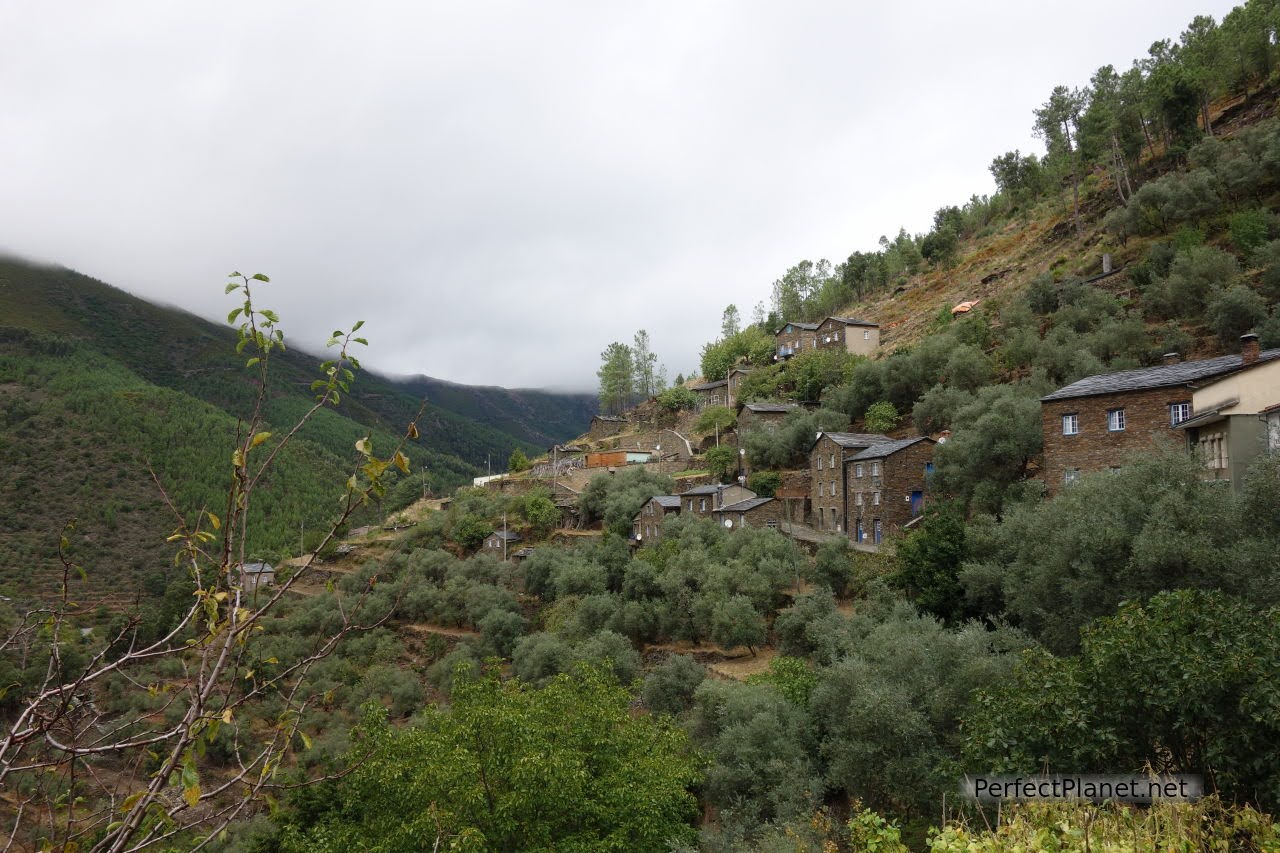
Piodao
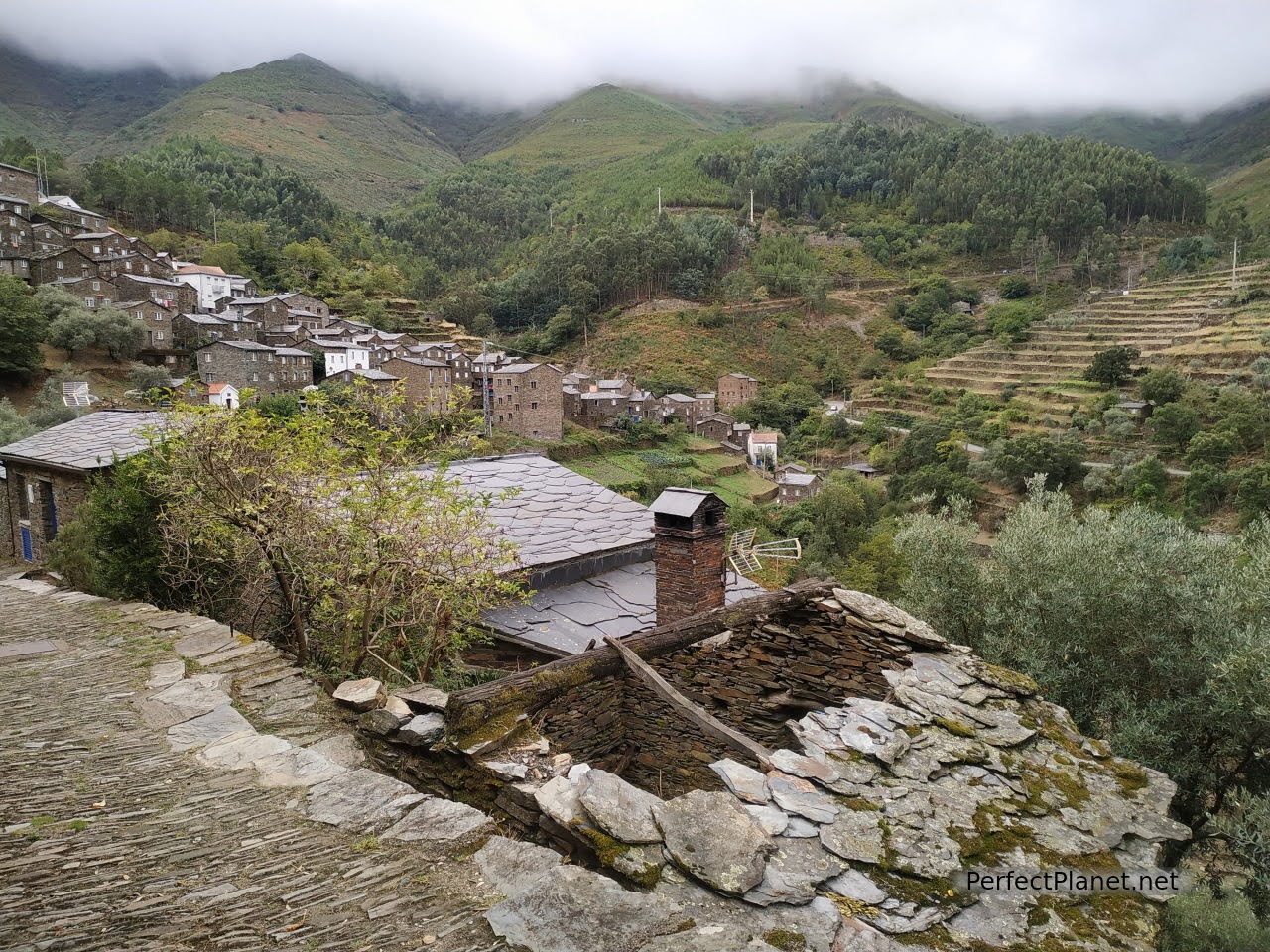
Piodao
We take the A15 towards Santarem and then the A13 towards Tomar to Avelar, from here we join the N2 and the N112 to Piodao.
As we approach Piodao, situated in the Sierra de Açor, the road narrows and becomes winding. The scenery is spectacular despite the fog.
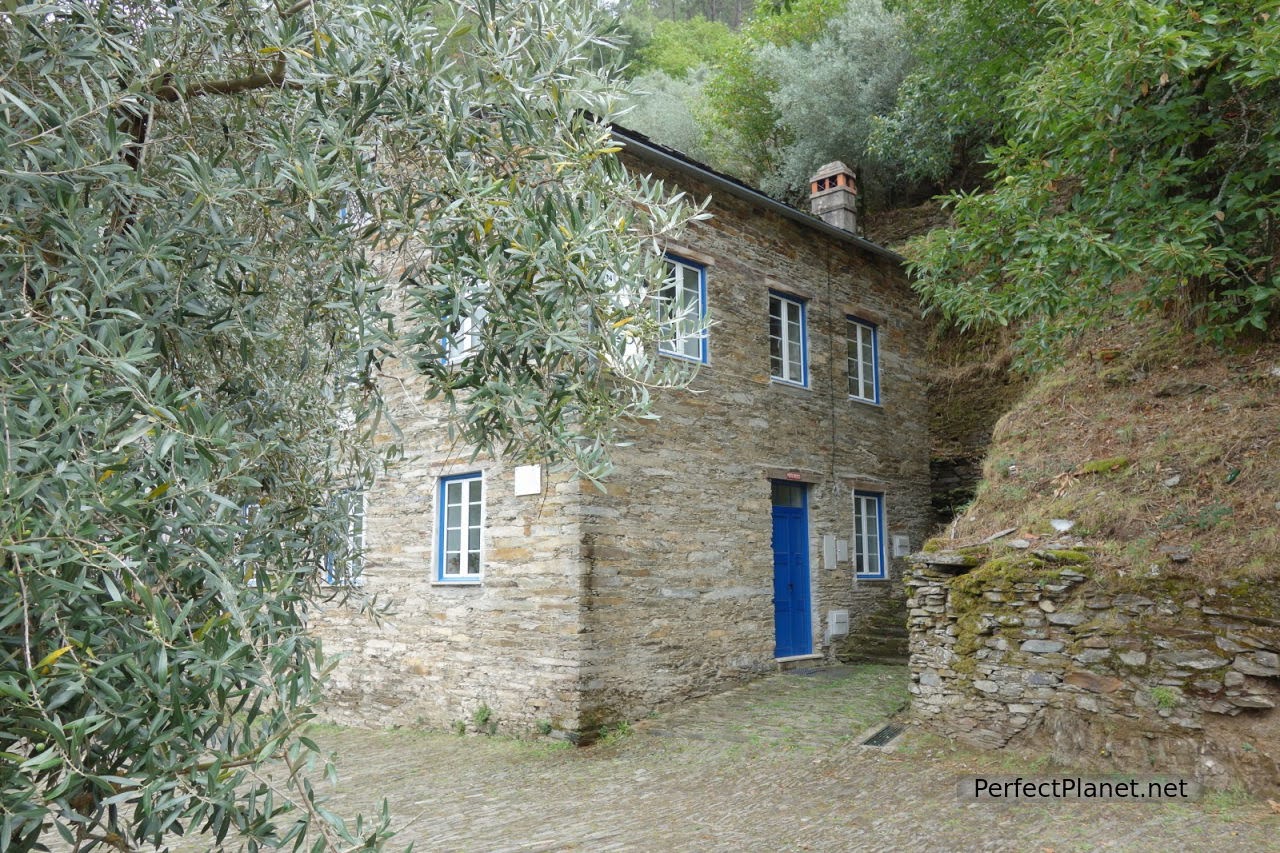
Piodao
Piodao is a small village of shale and grey slate houses in a terraced valley surrounded by mountains and forest. Impressive.
Piodao has remained isolated for centuries, until the construction of a royal road to Coimbra in the 19th century brought traders to Piodao, and it was not until the 1970s that a tarmac road was built, which has helped to keep its architecture intact.
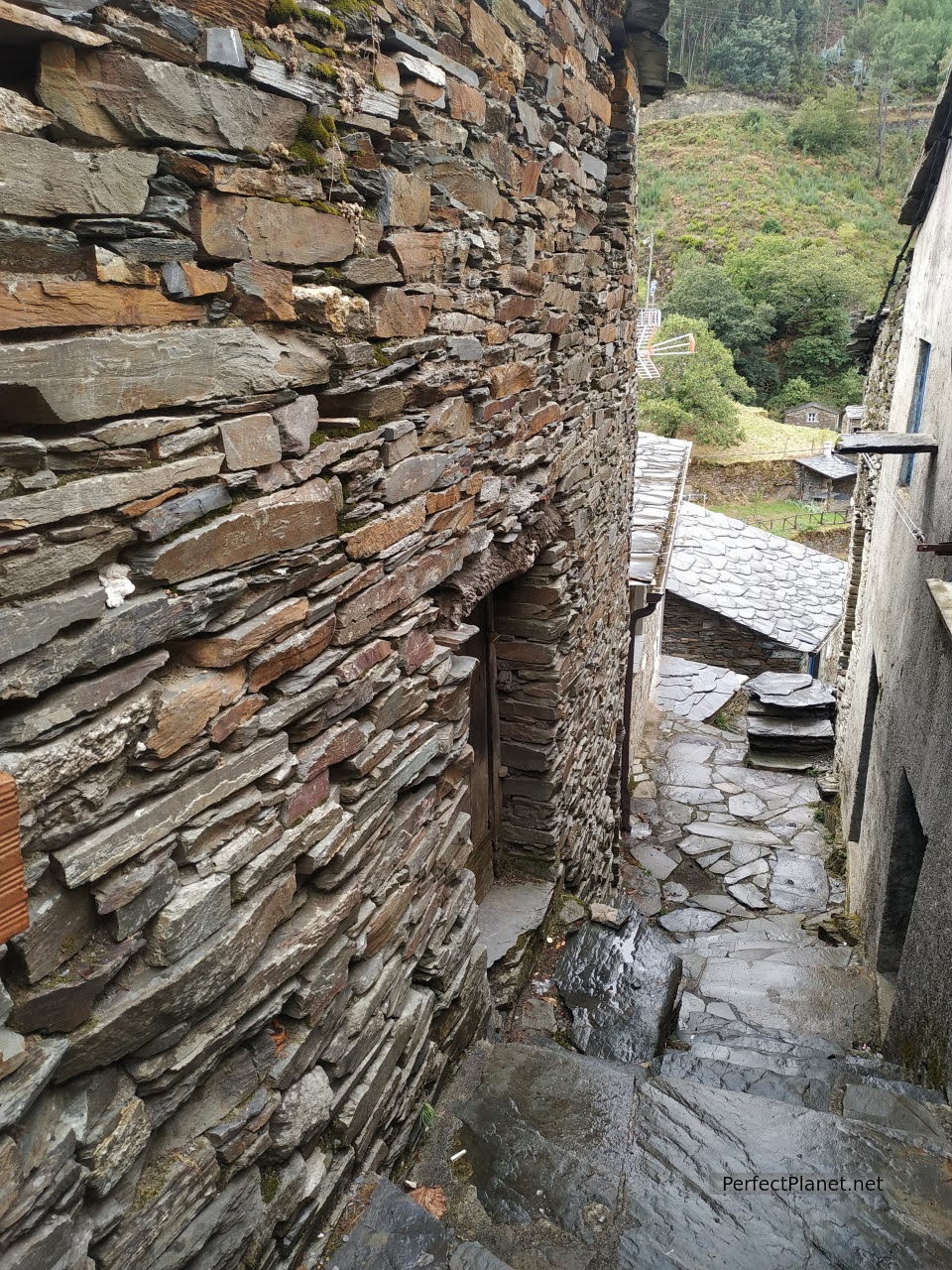
Piodao
Although restored most of the houses still retain their natural rural charm of yesteryear.
There is a large car park at the entrance to the village. In the small square at the entrance there are several stalls selling souvenirs and traditional products (don't buy everything here, there is a small shop inside the village and the owner is a charming eighty year old man) and a couple of restaurants with terraces. We had a small lunch on the terrace of the café A Gruta, tasting some delicious sweet quesadillas.
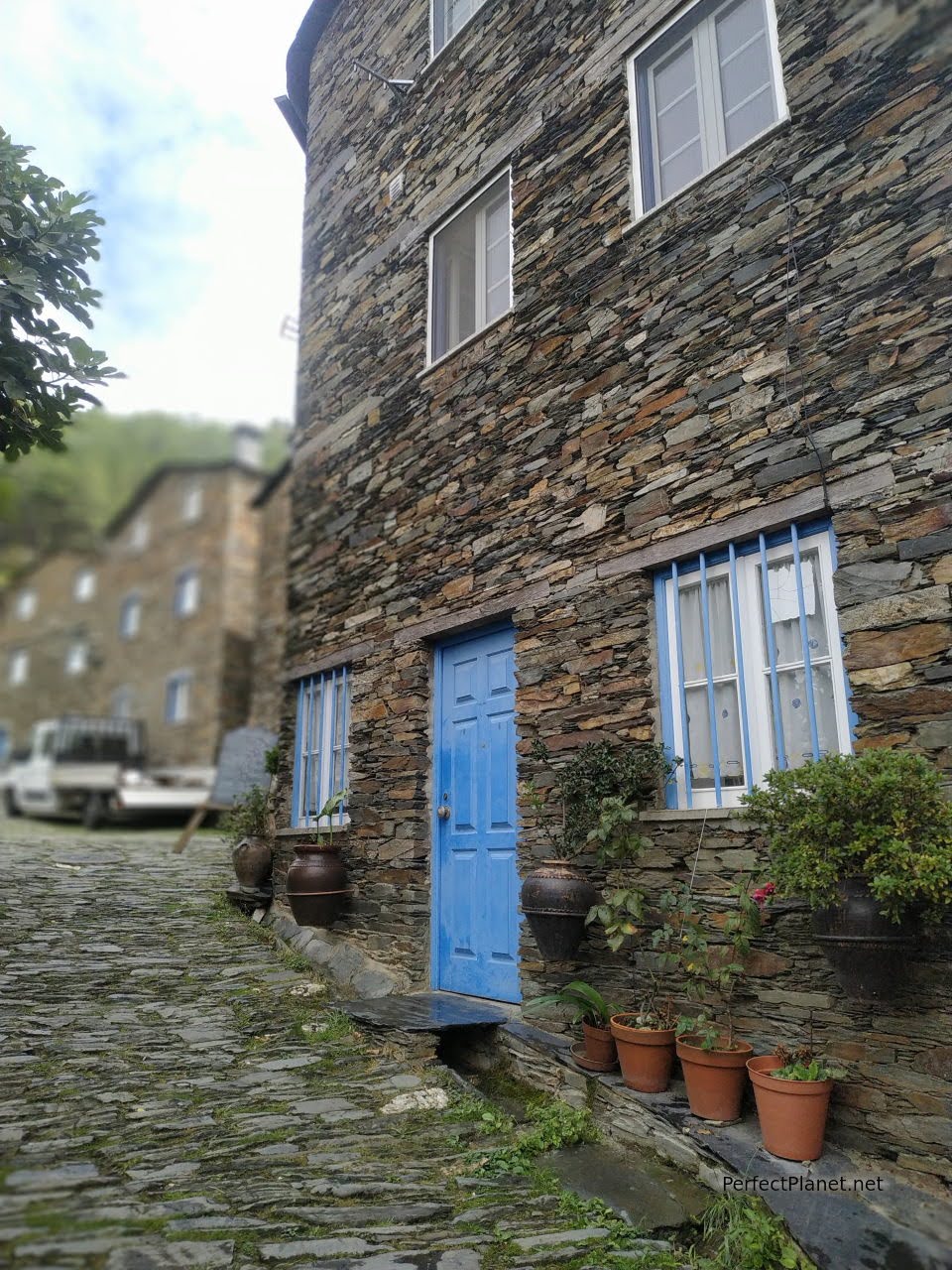
Piodao
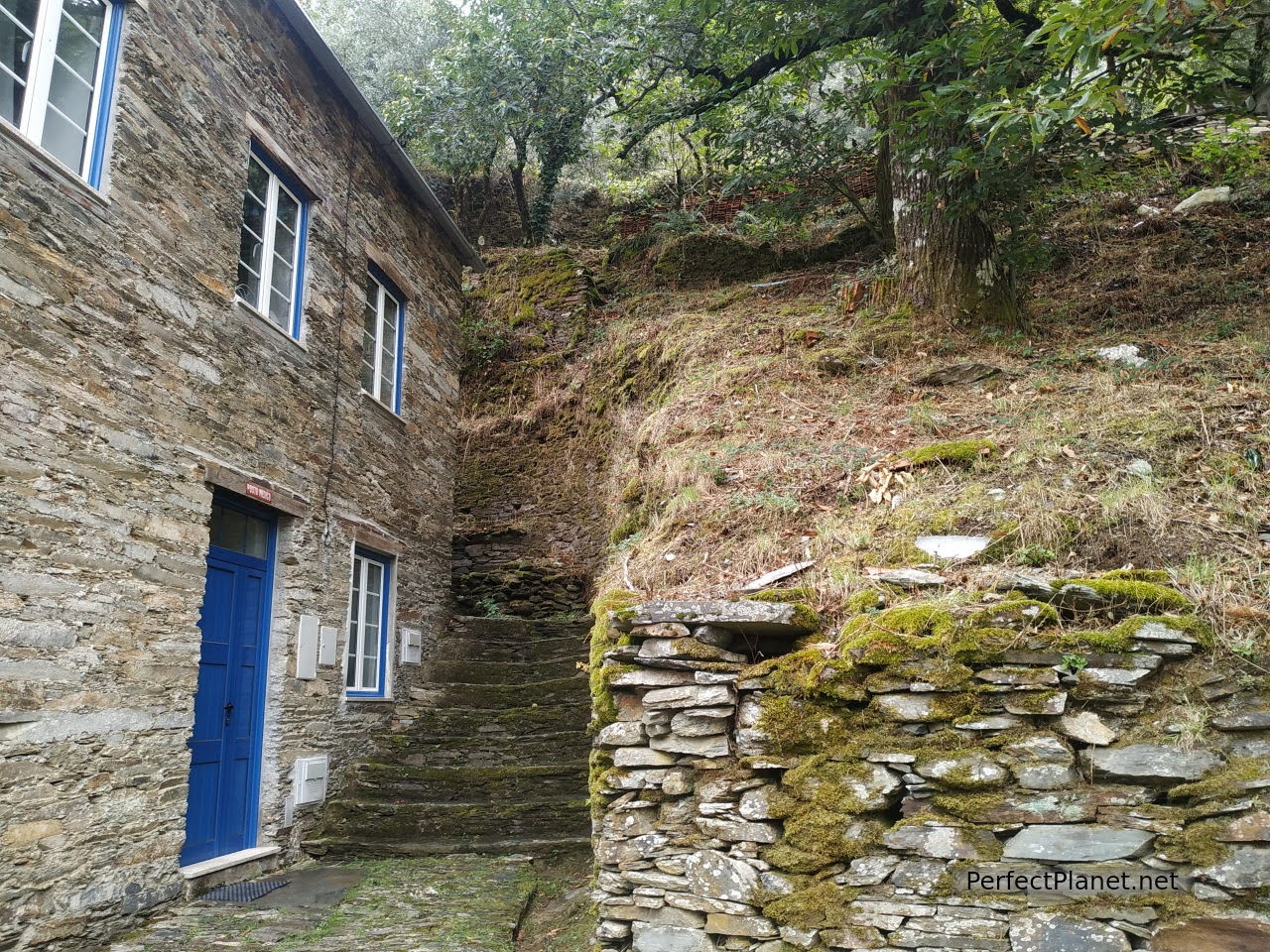
Piodao
Although most of the houses have been restored, the Church of Nossa Senhora Conceiçao still stands next to the square. Its white colour stands out against the rest of the stone buildings and its deep blue doors.
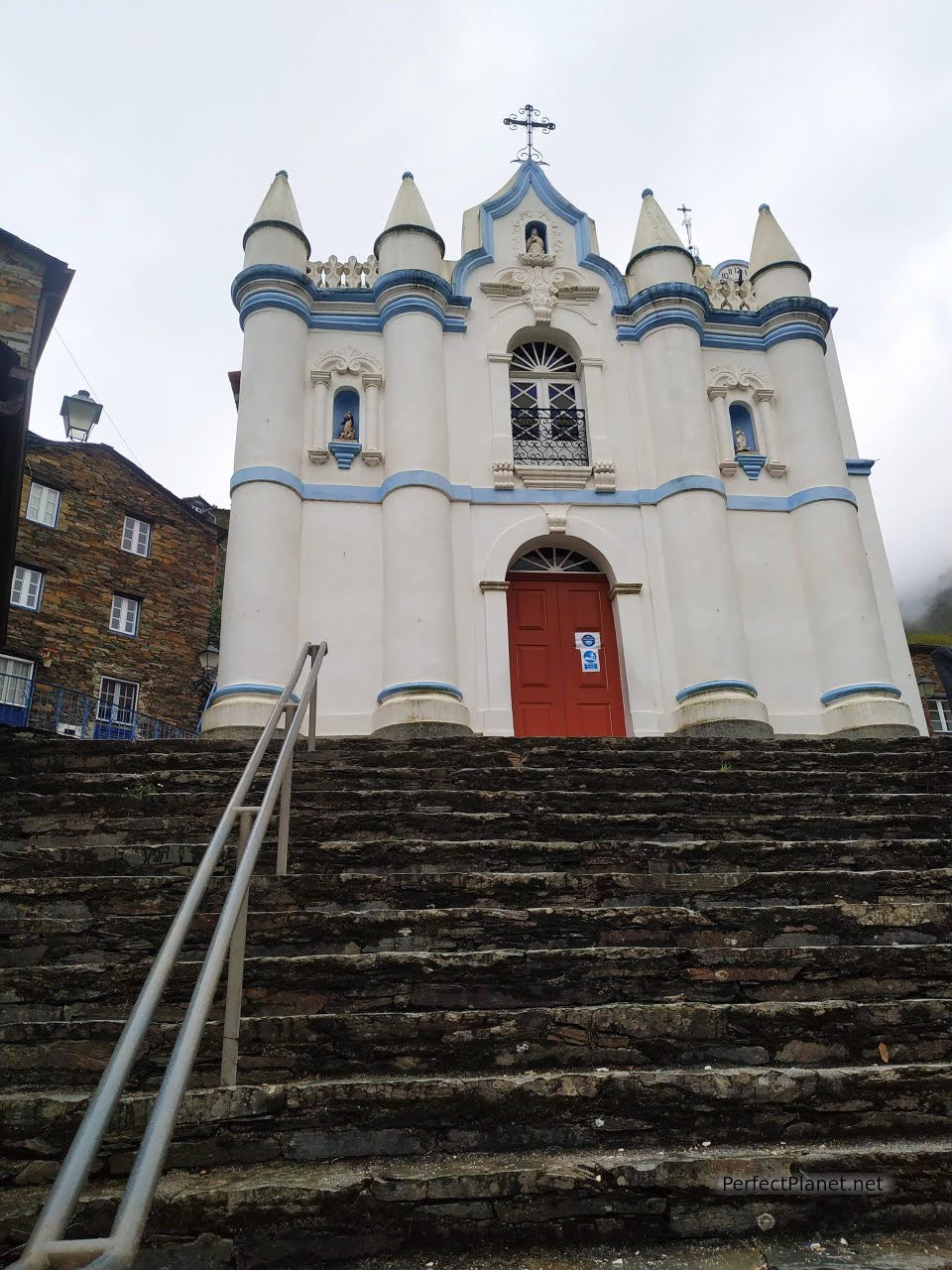
Church of Nossa Senhora Conceiçao
We stroll through the village of labyrinthine streets, the views are spectacular despite the rain.
If you have the chance, don't miss it. The Serra do Açor and in particular Piodao and Foz de Égua are amazing.
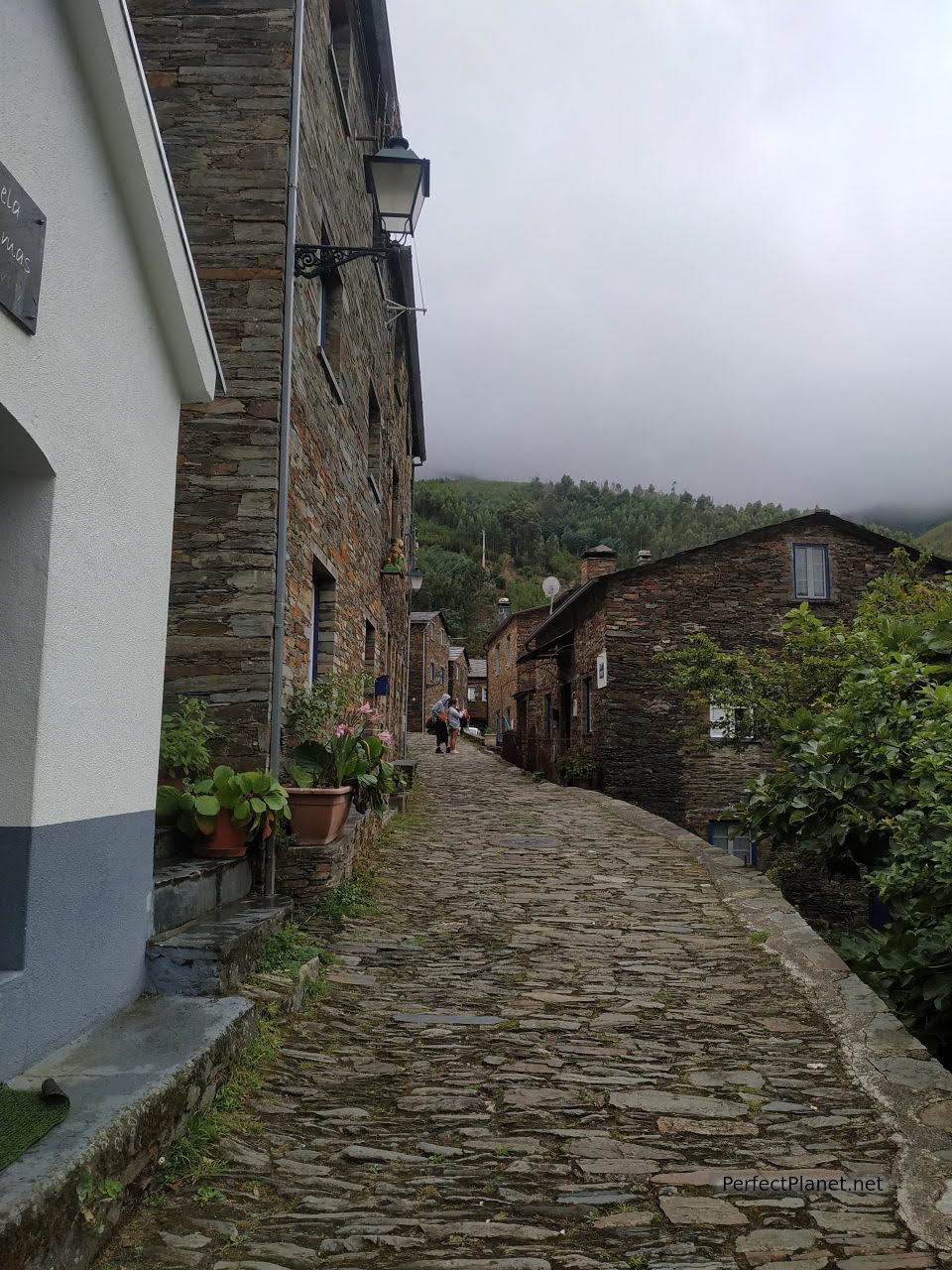
Piodao
From Piodao there are numerous hiking routes, one of the most spectacular is the one that takes you to Foz de Égua, specifically to its river beach. Impressive.
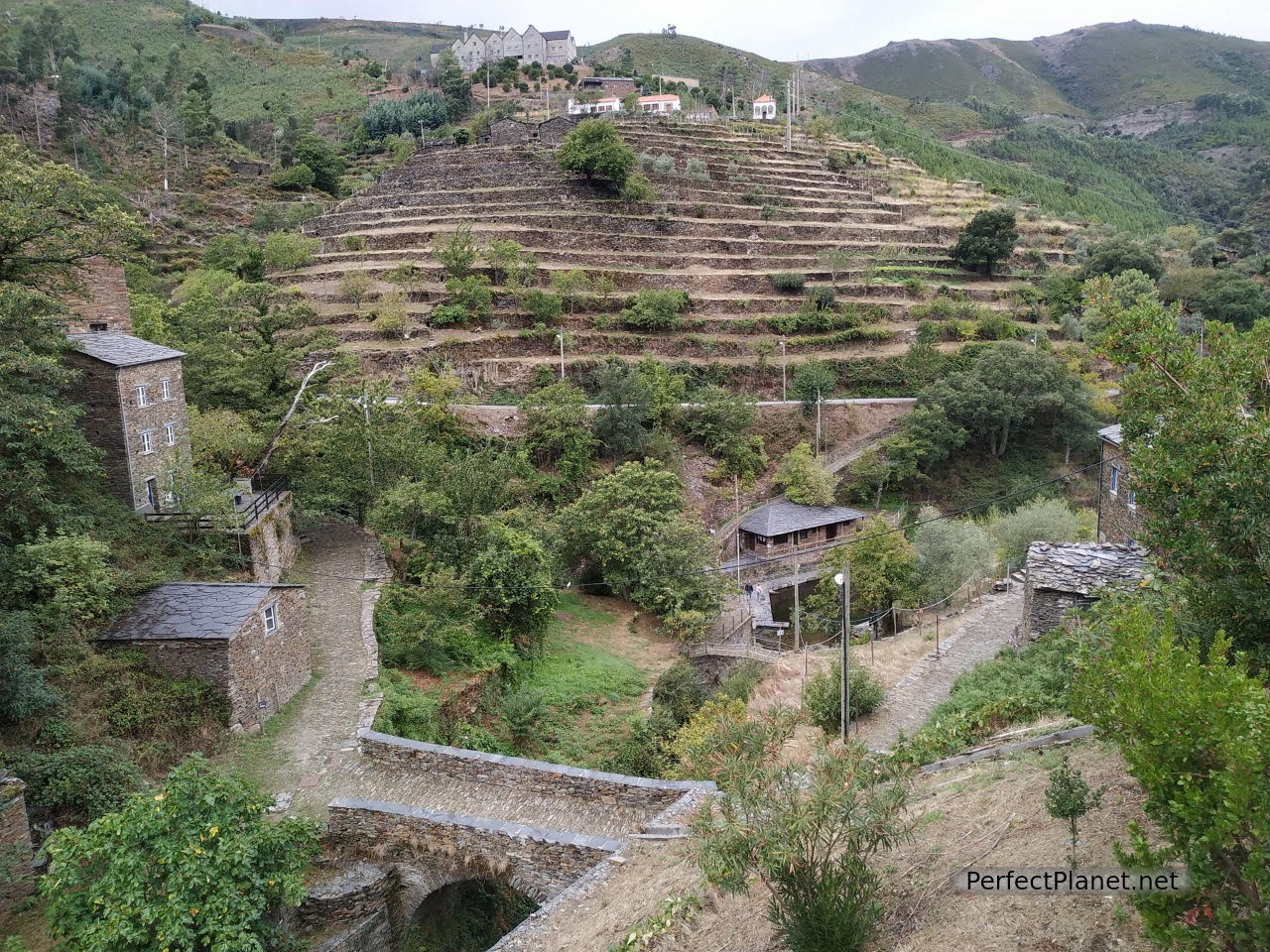
Piodao
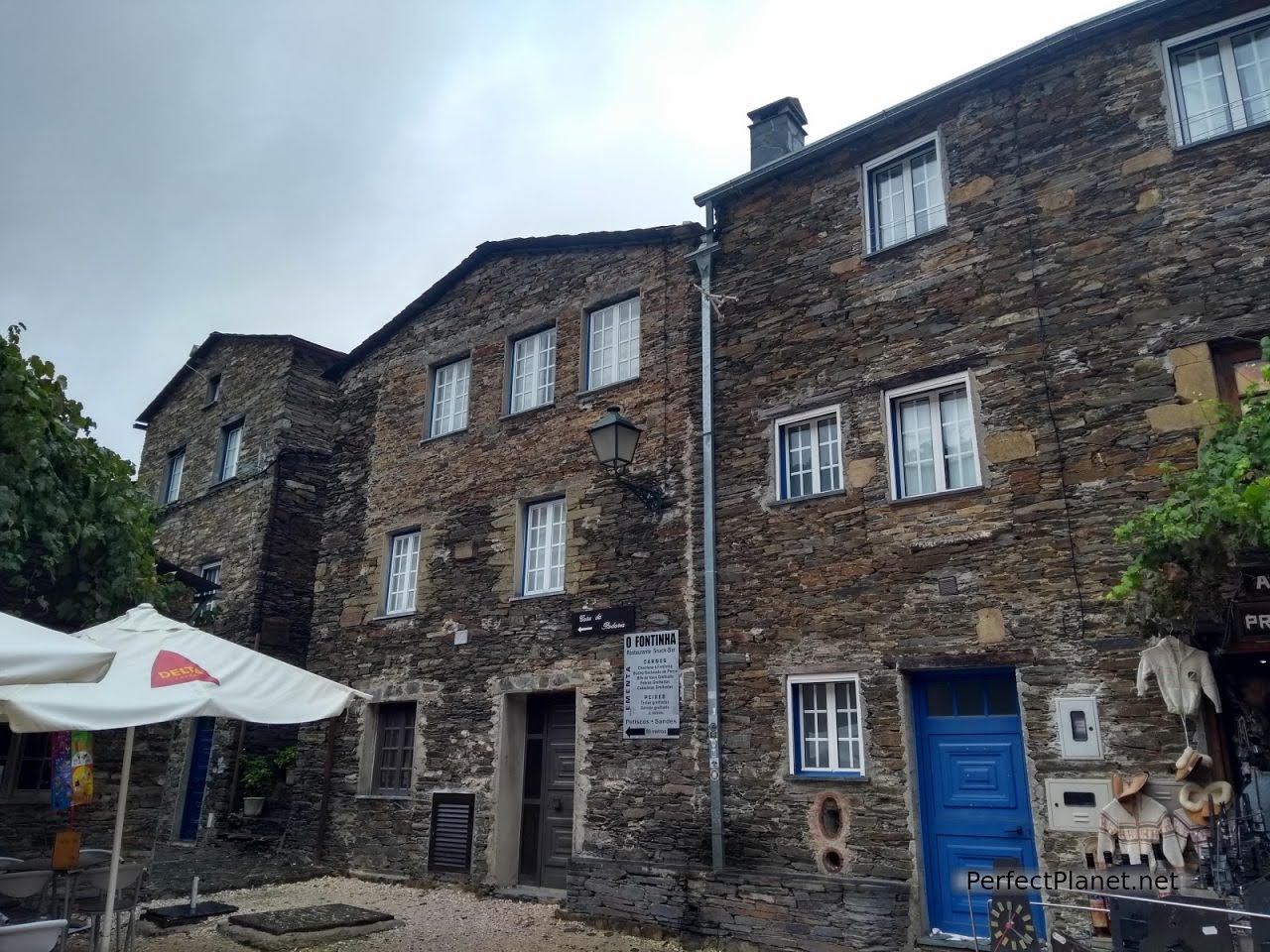
Piodao
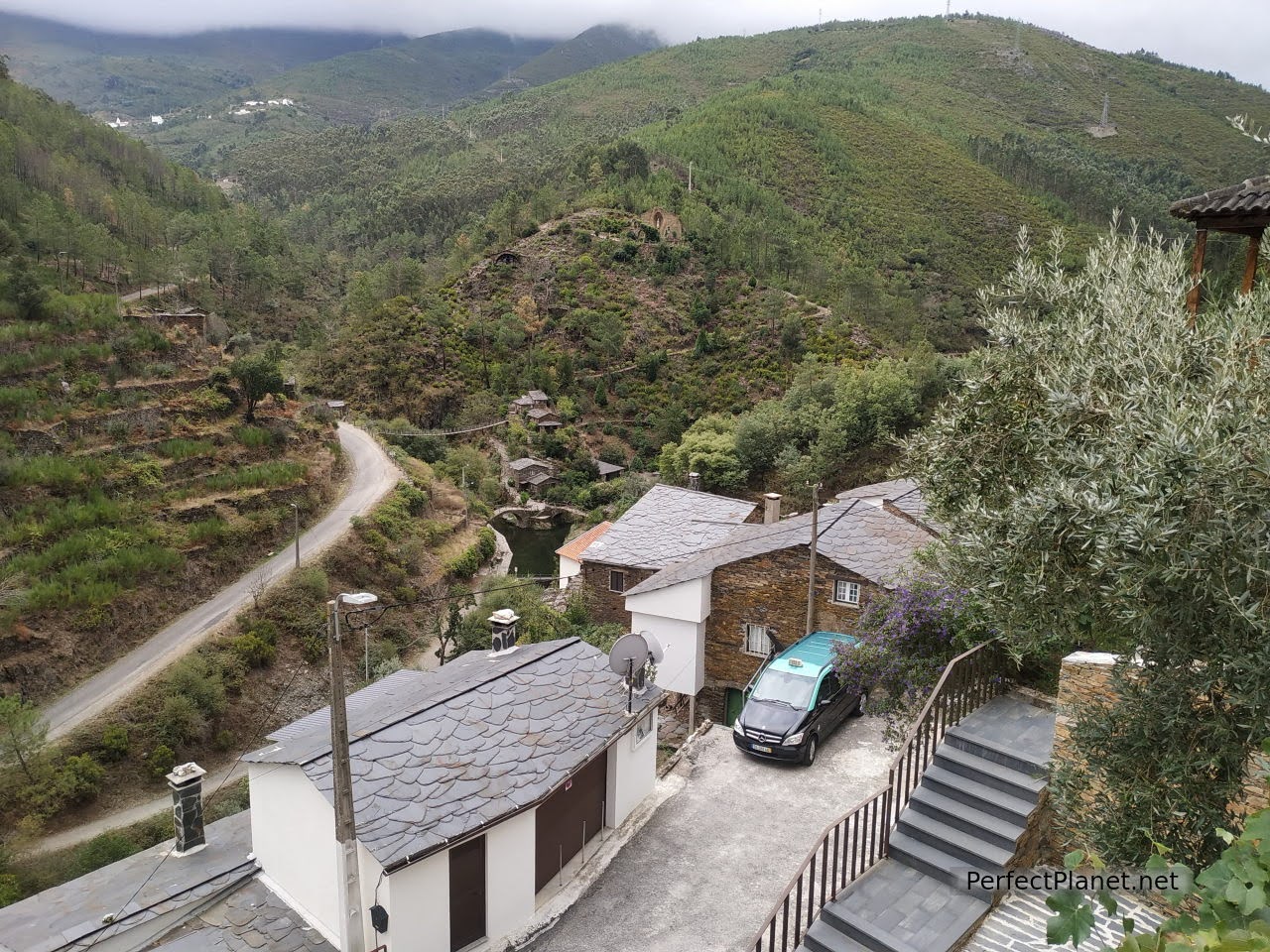
Foz de Egua
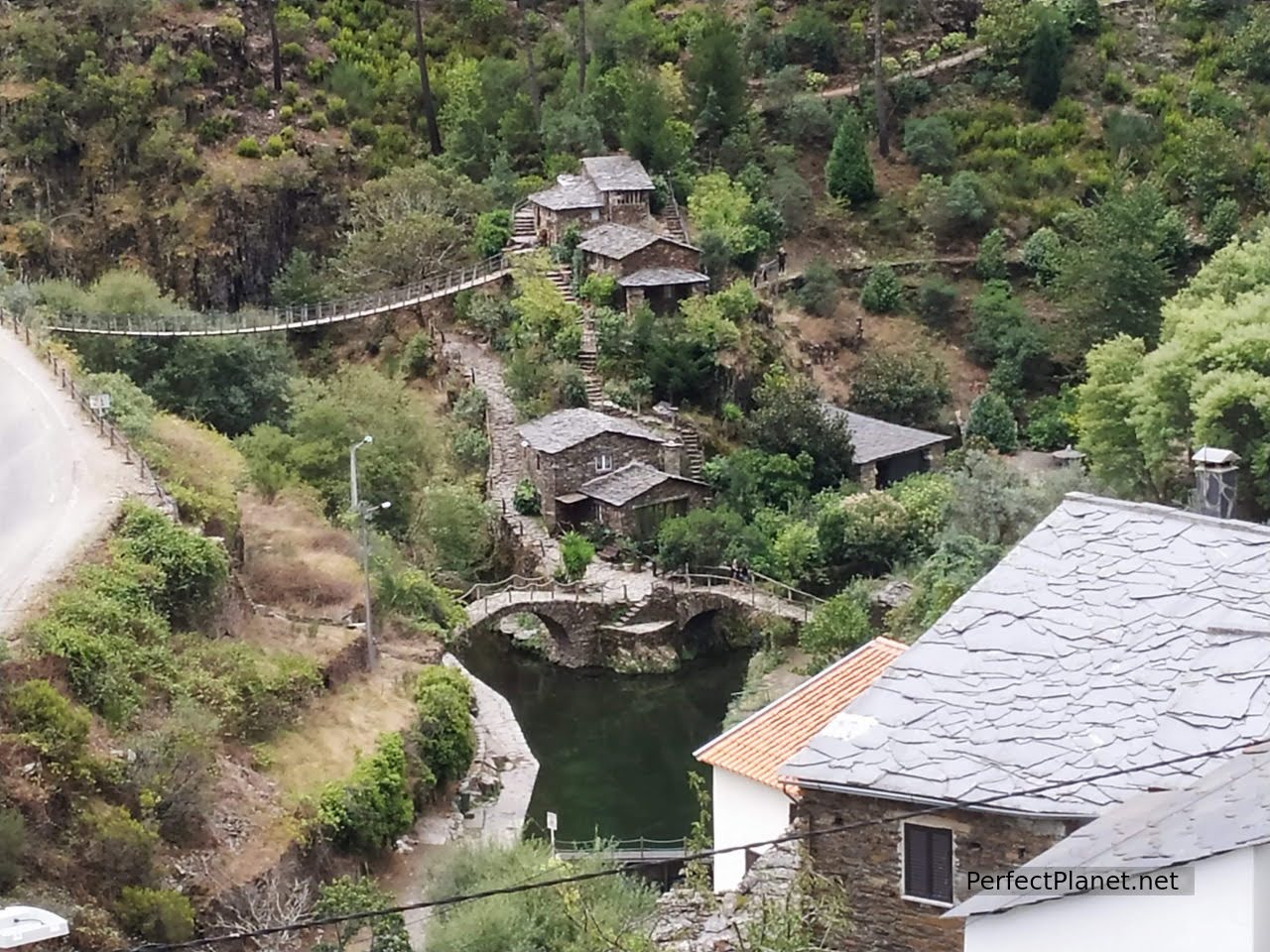
Foz de Egua
We continue along the CM1134 until we reach the village of Vide where we stop for lunch.
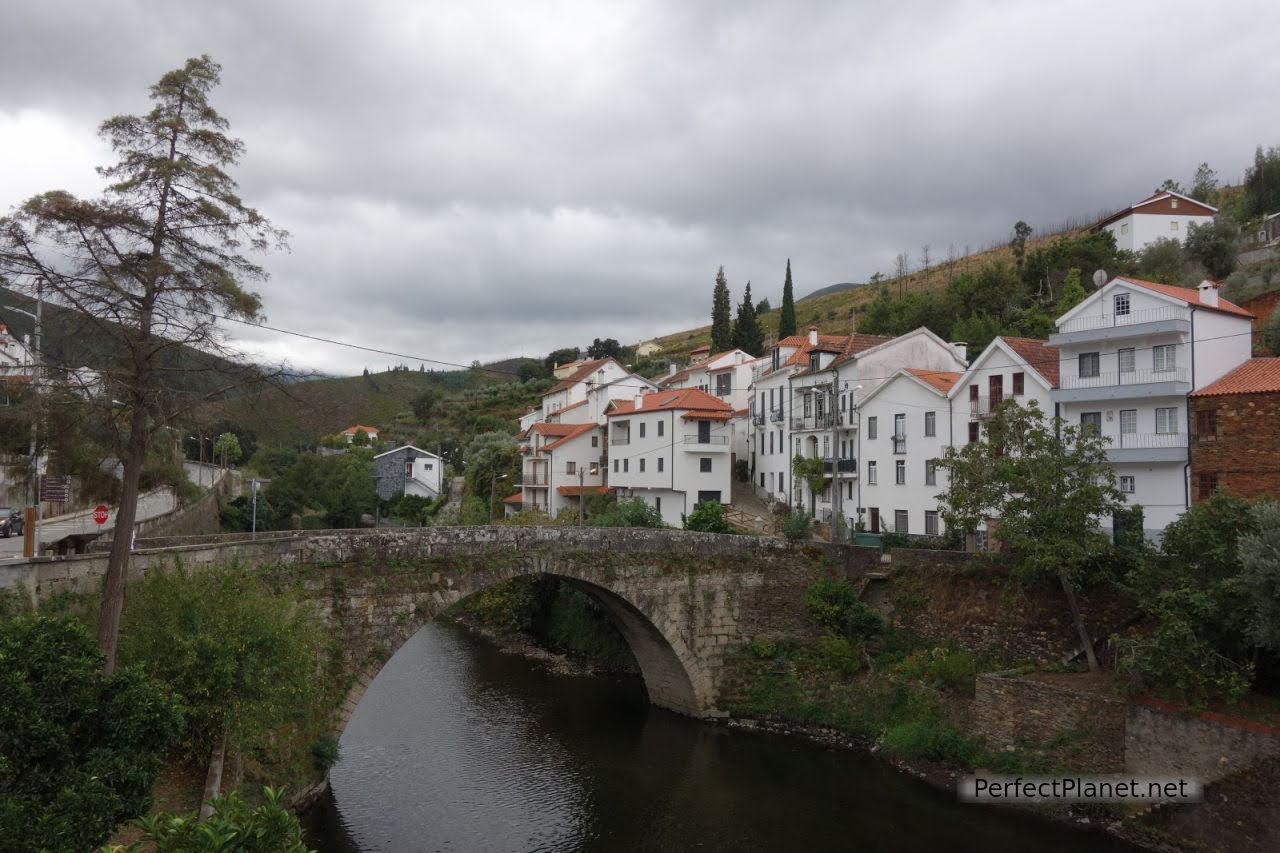
Vide
We eat at the Água Doce restaurant from whose terrace you can admire the bridge of Vide. We order bifanas with potatos (pork loin sandwich) and grilled chorizo cooked on the clay grill that we saw in Soajo burnt with orujo.
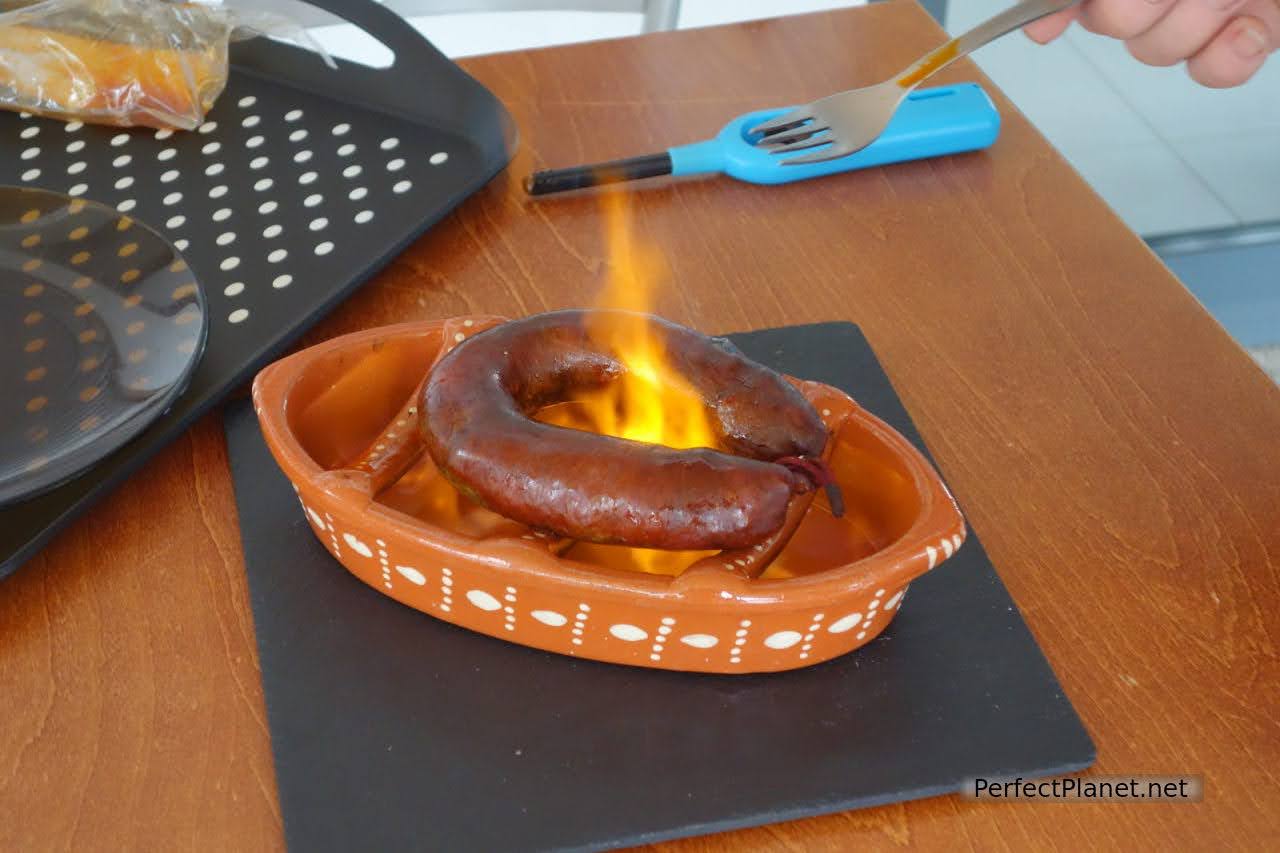
Chorizo
The owner is charming and recommends us to reach Sabugueiro, our next destination, by another road and discover more beautiful corners of the area and even some of the seven natural wonders of Portugal.
From Vide we take the M518 towards Muro to visit the Poço Fundeiro or Poço da Broca do Muro. When we get there, a local woman tells us how to get down, she says she won't come with us as she is too old for the road, it is quite steep but it is easily accessible.
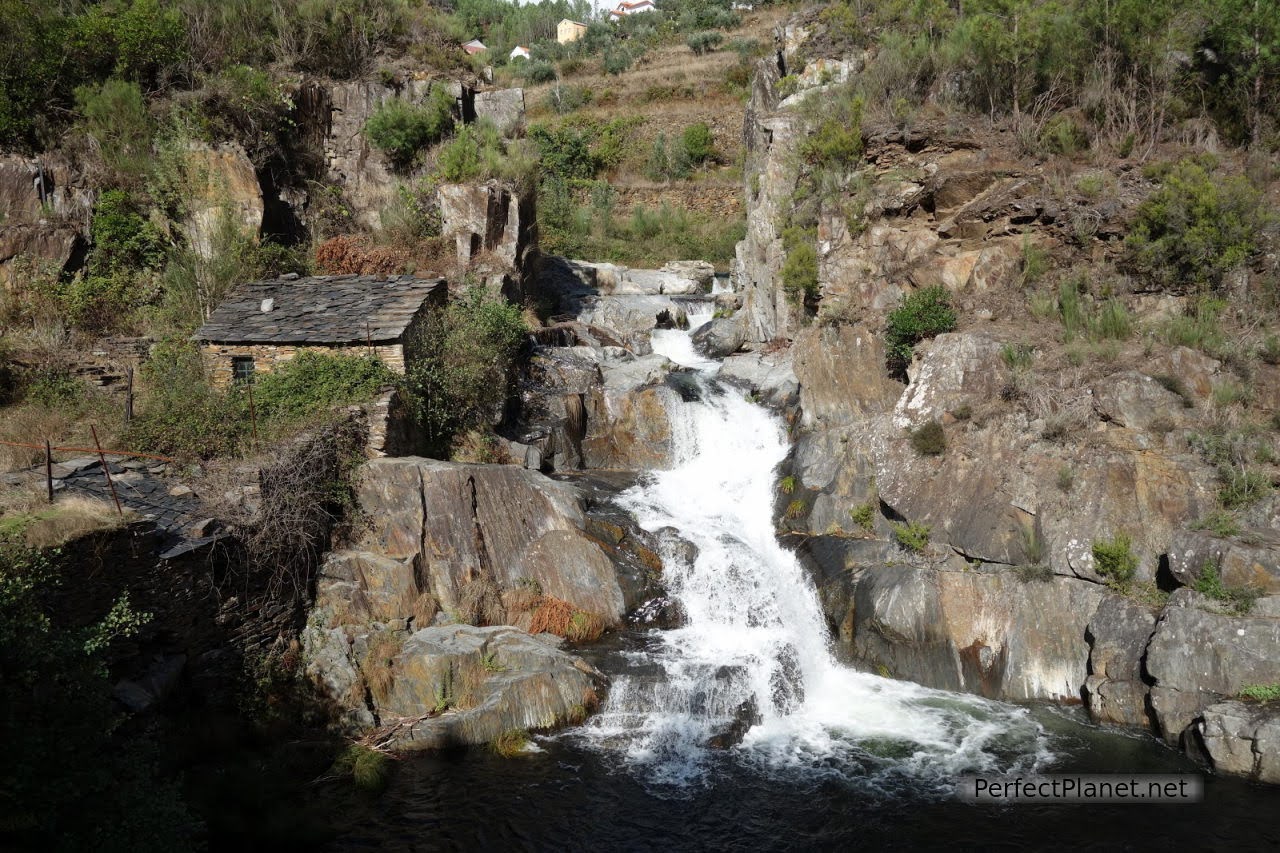
Poço Fundeiro
We can hear the roar of the water and we get excited. We arrive at a spectacular waterfall that pours its waters into a huge pool. Impressive. We stay a long time taking pictures, spectacular.
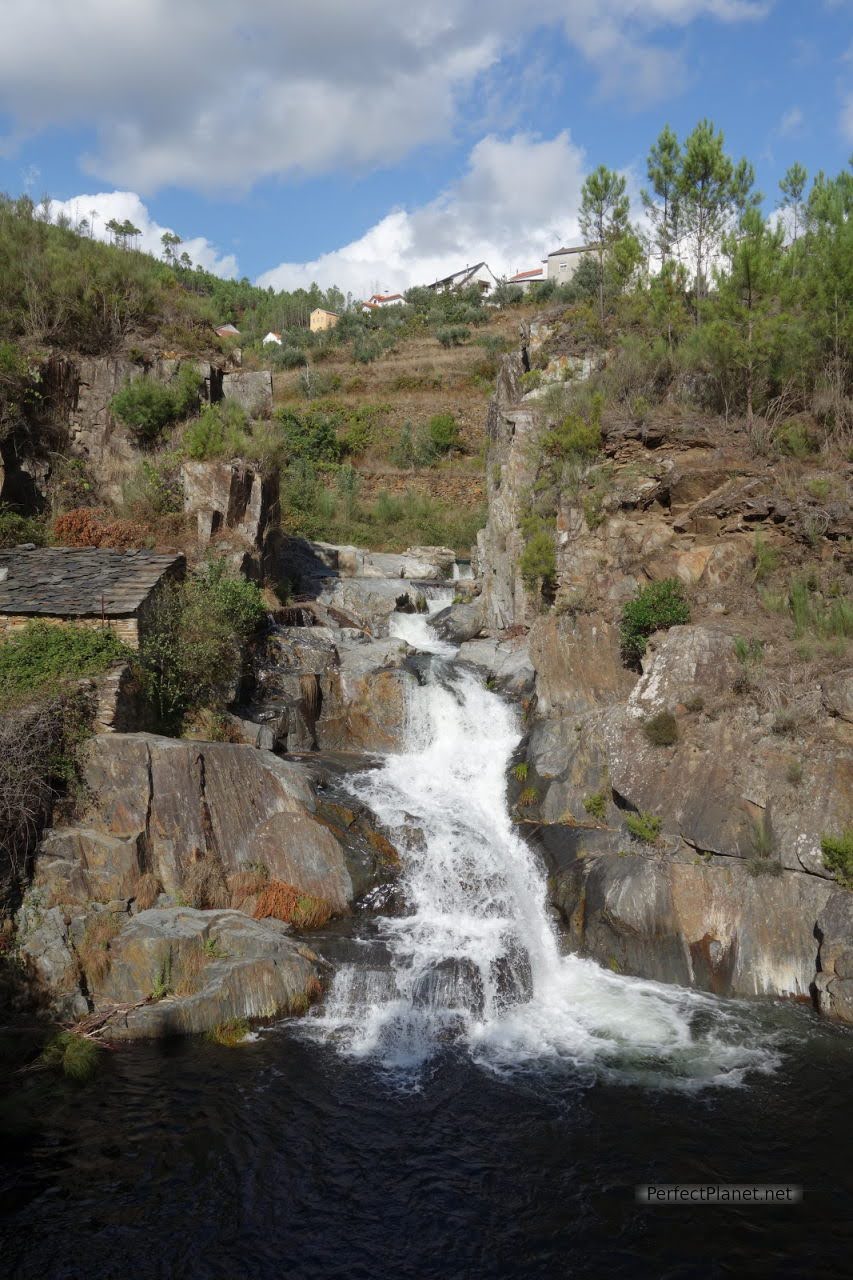
Poço Fundeiro
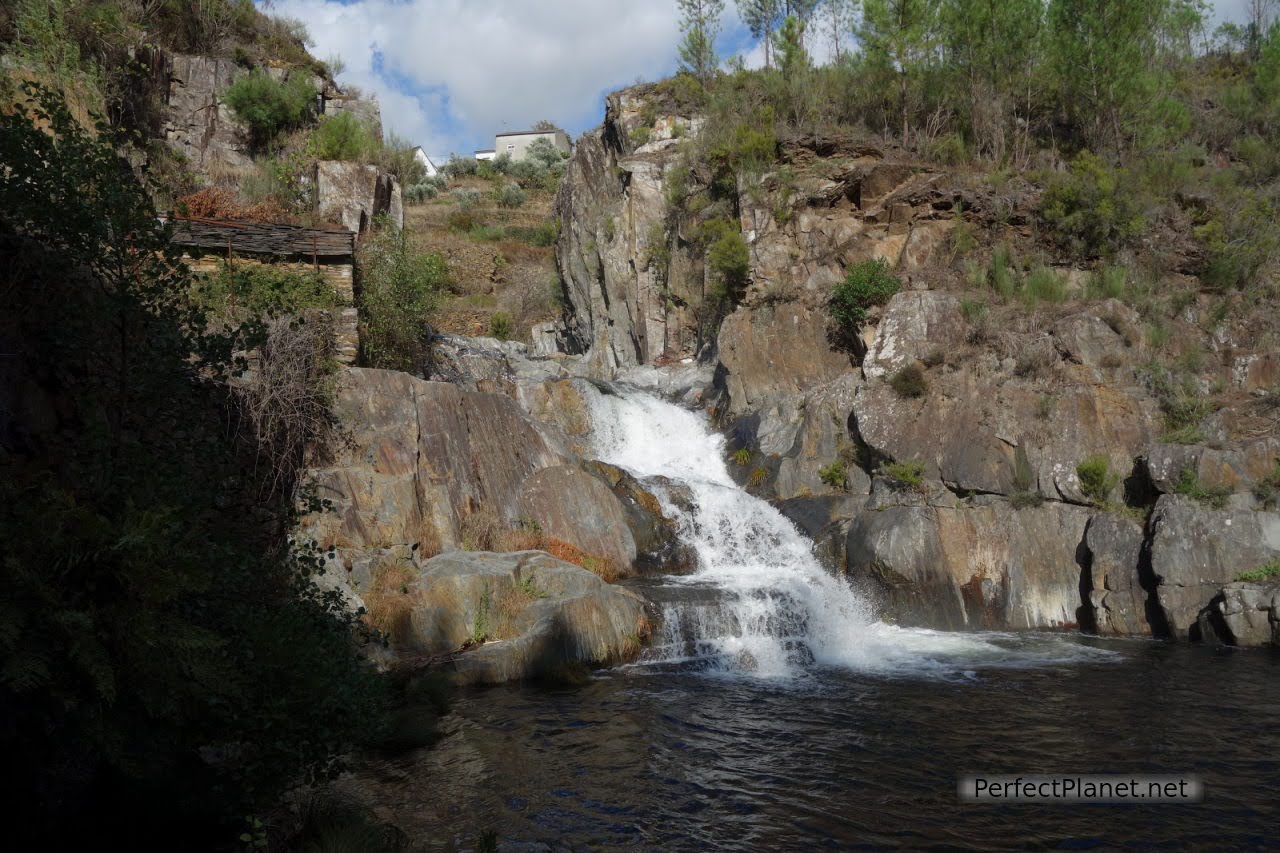
Poço Fundeiro
We return to the car and continue on the road to Casal do Rei and Cabeça, the latter being transformed at Christmas time by its Christmas decorations into a "Aldeia Natal". Small villages of stone houses with slate roofs and sloping terraces, impressive.
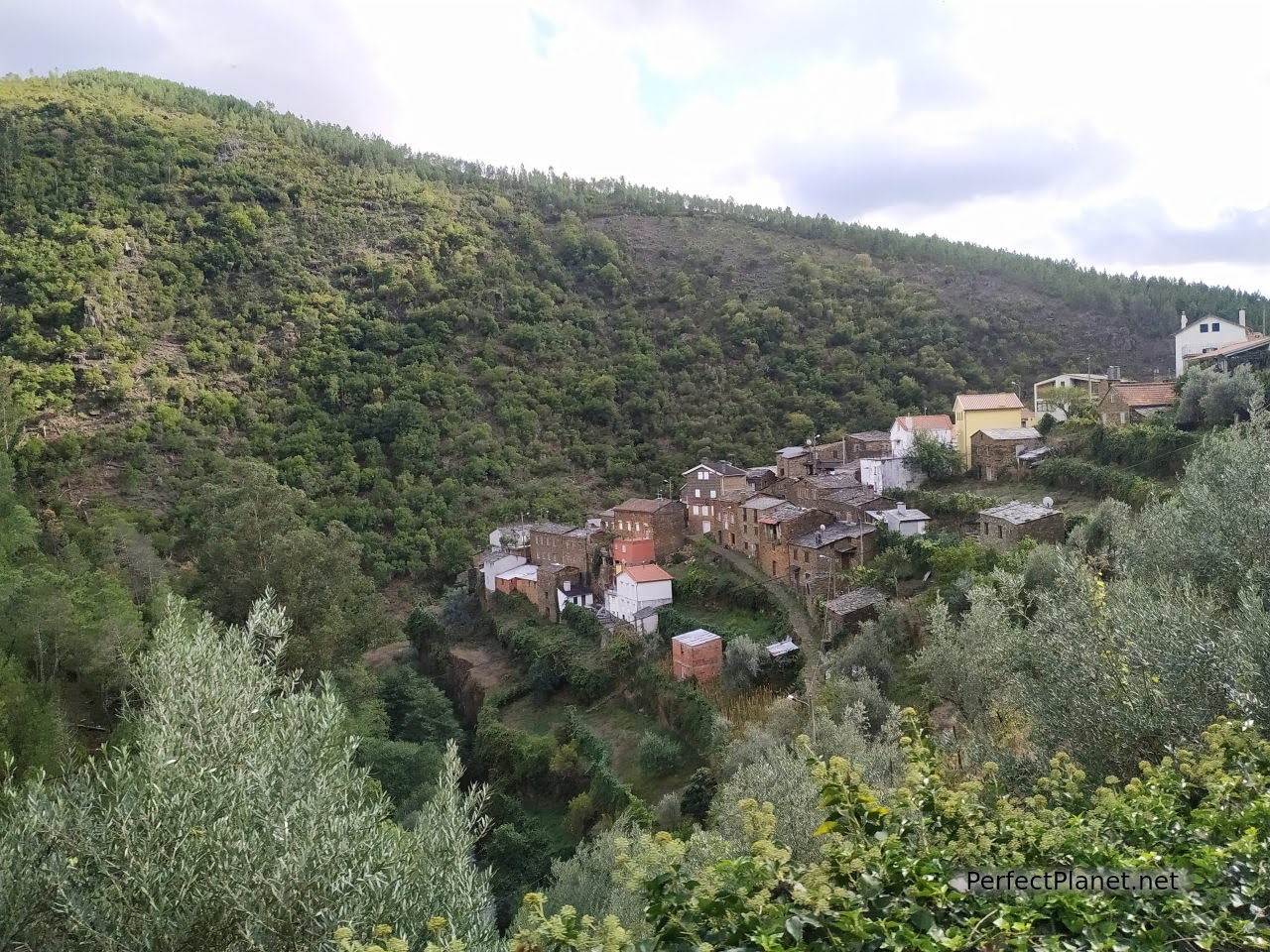
Casal do Rei
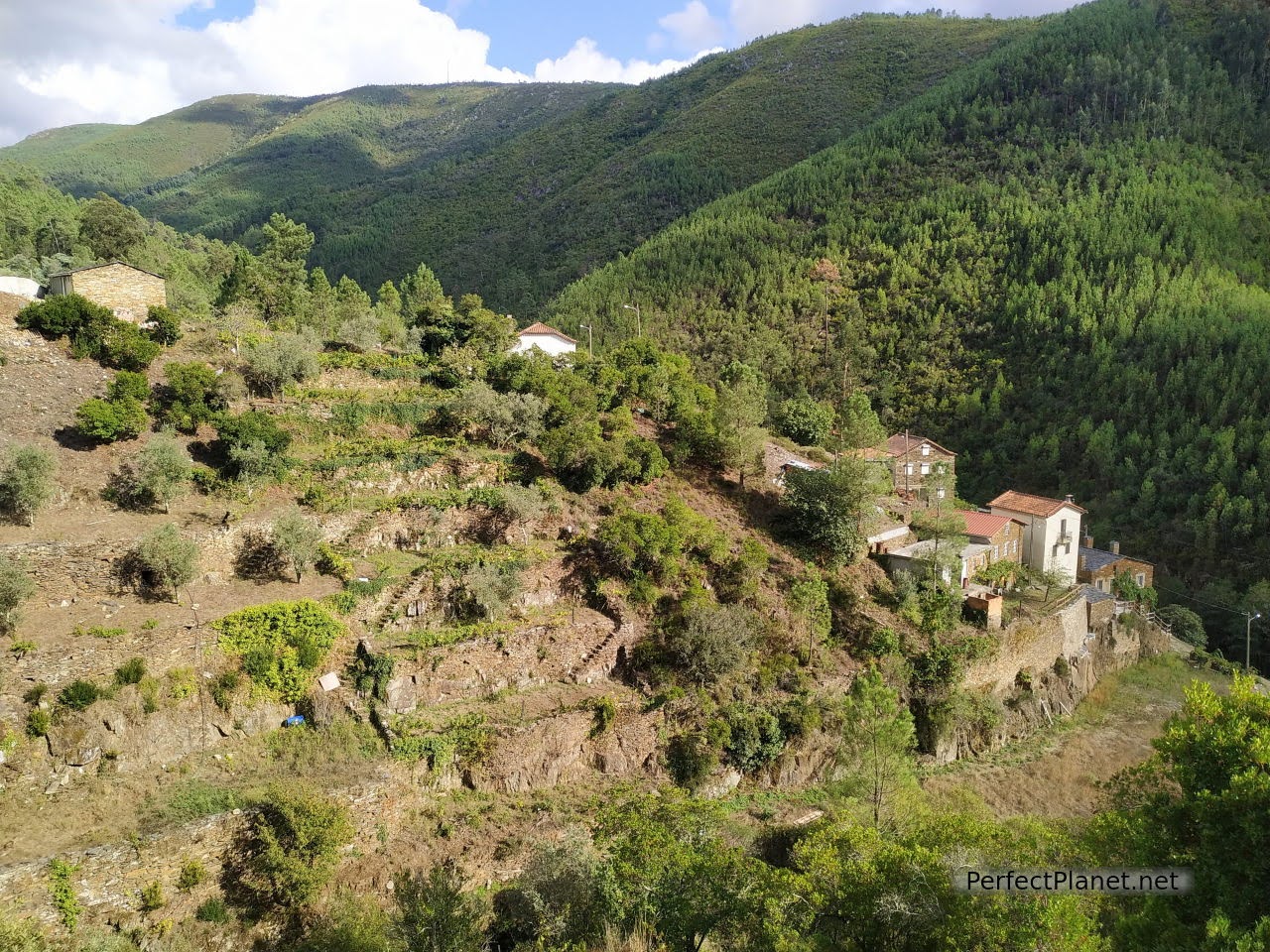
Casal do Rei
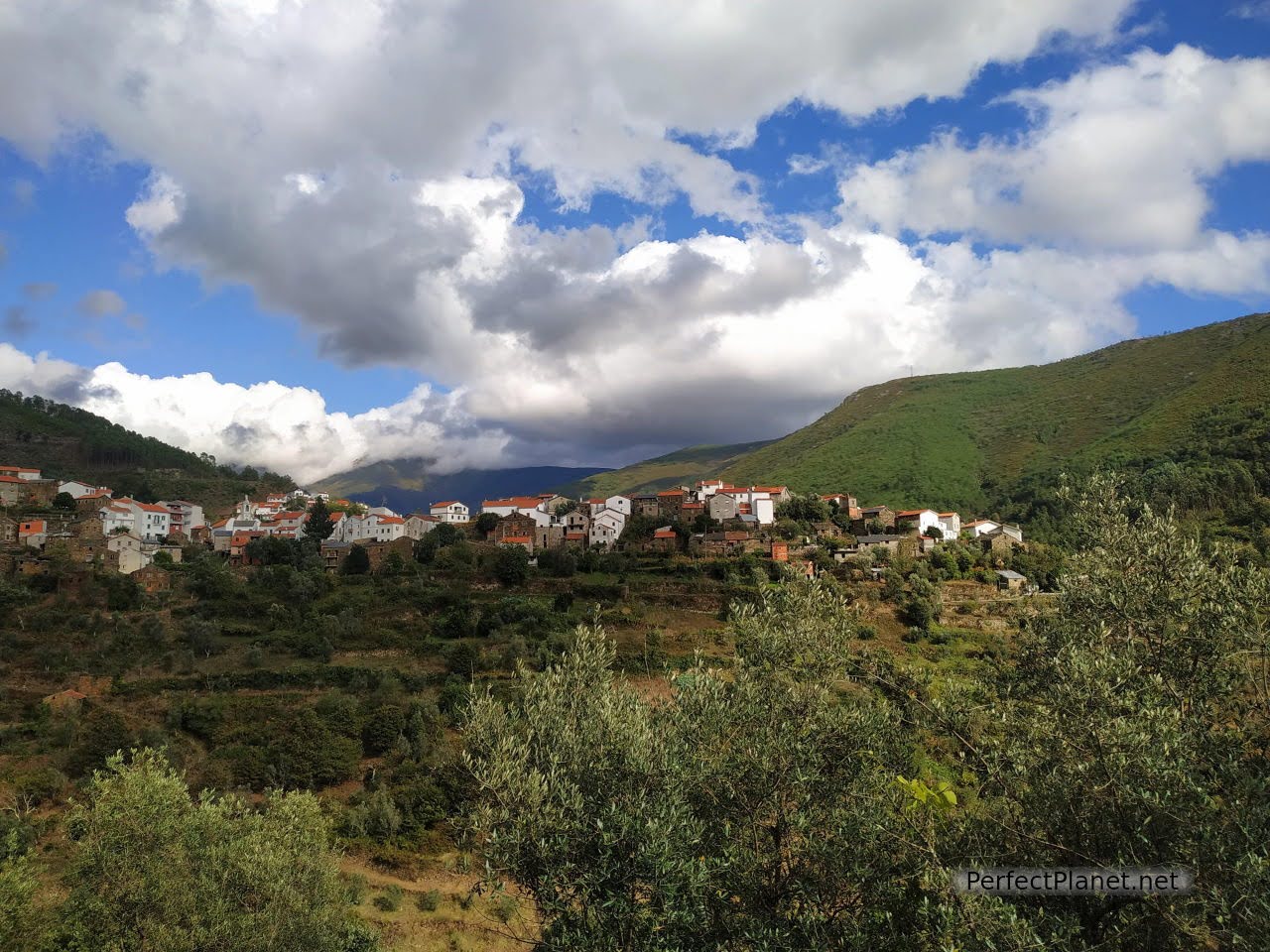
Cabeça
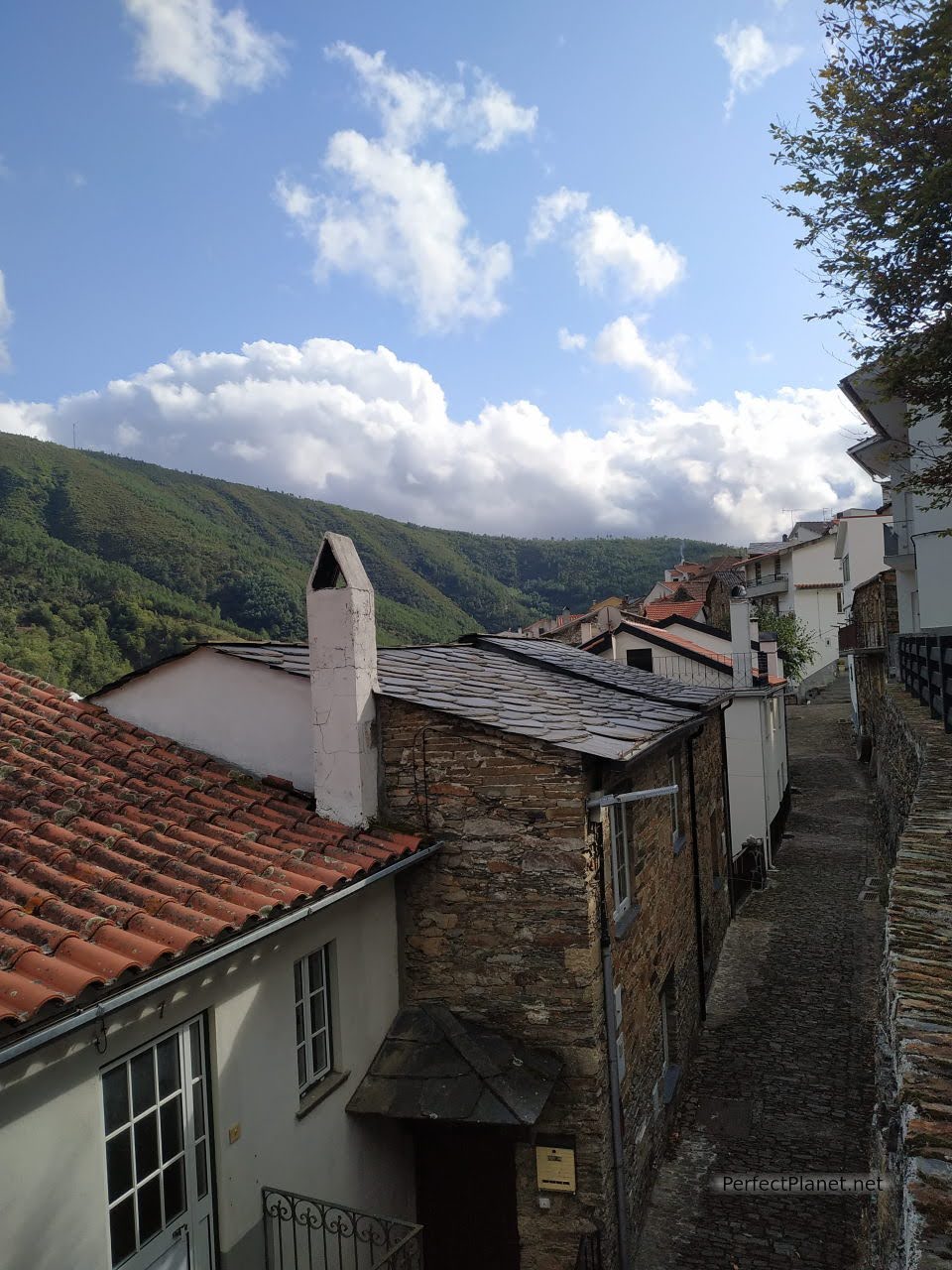
Cabeça
We continue our route until we reach another marvellous place, the river beach of Loriga. Located in the Serra da Estrela Natural Park at the foot of the Glacial Valley of Loriga. A place of great natural beauty at the foot of the road conditioned for bathing. It is beautiful.
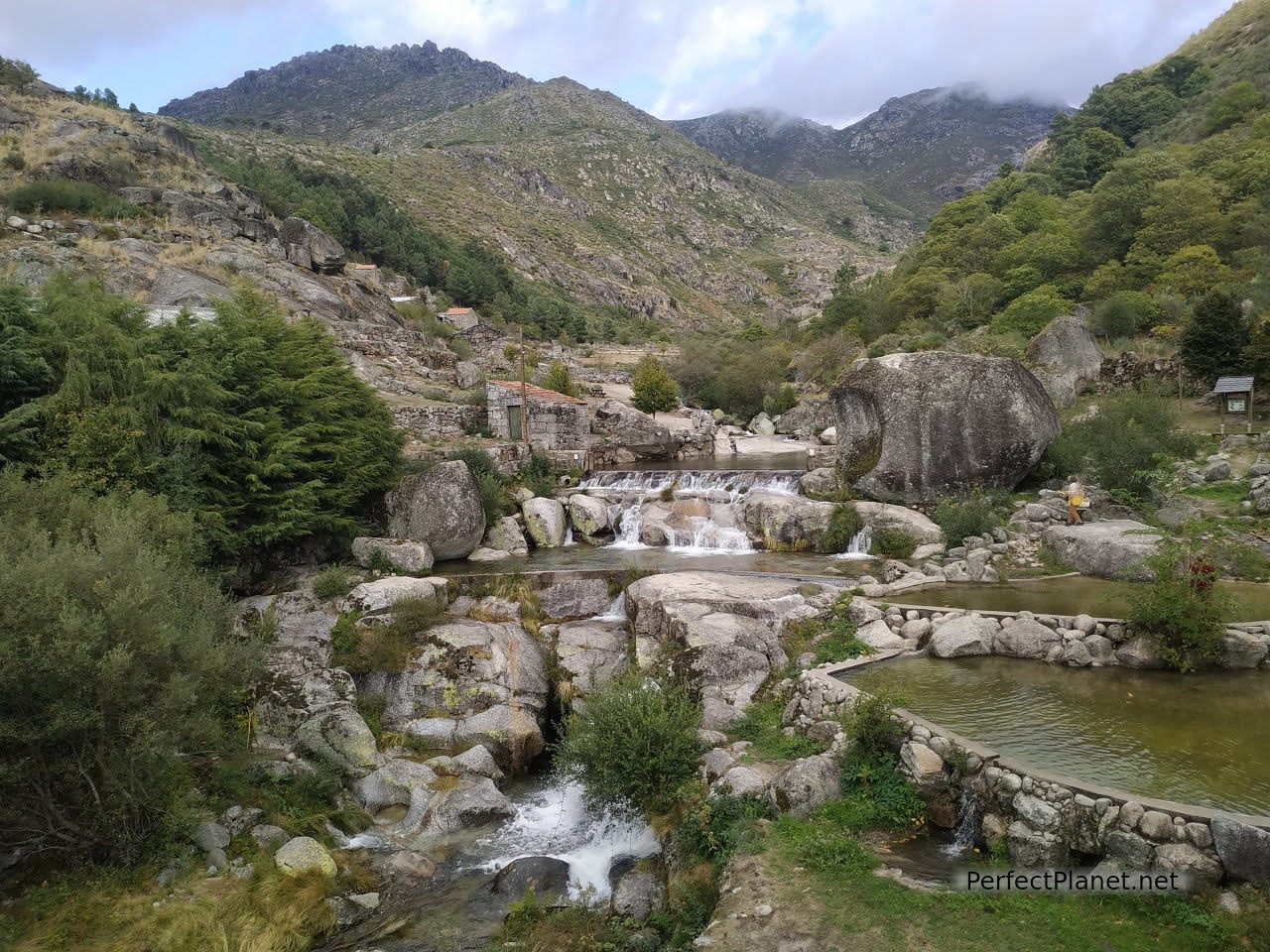
River beach of Loriga
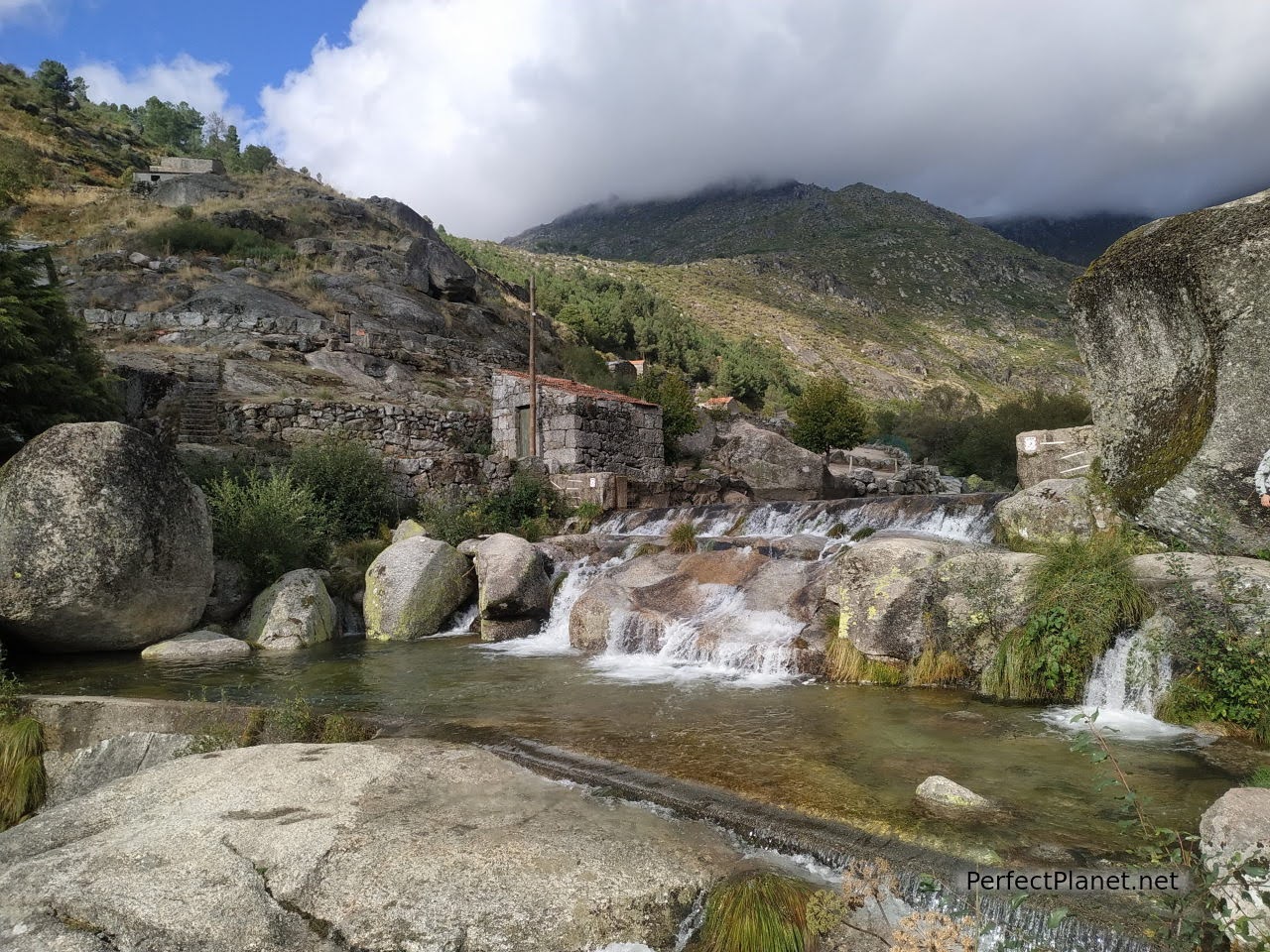
River beach of Loriga
From Loriga we still have half an hour to Sabugueiro. The ride is more alpine and it is cold. The views are spectacular, what a great day.
We pass the Lagoa Comprimida reservoir, from here you can walk to Covao Dos Conchos, an artificial lake famous for its bellmouth spillway, but there is not enough water so we don't go near it.
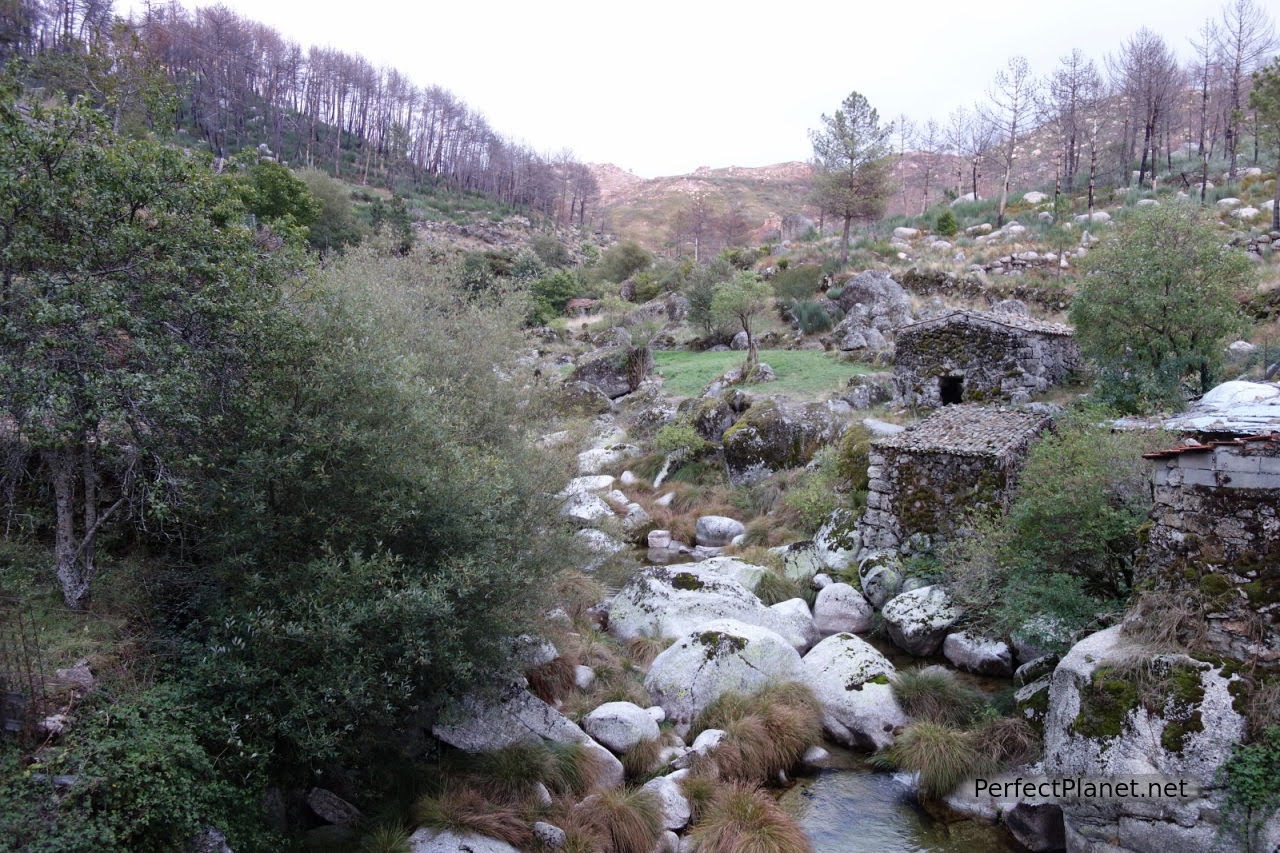
River beach of Sabugueiro
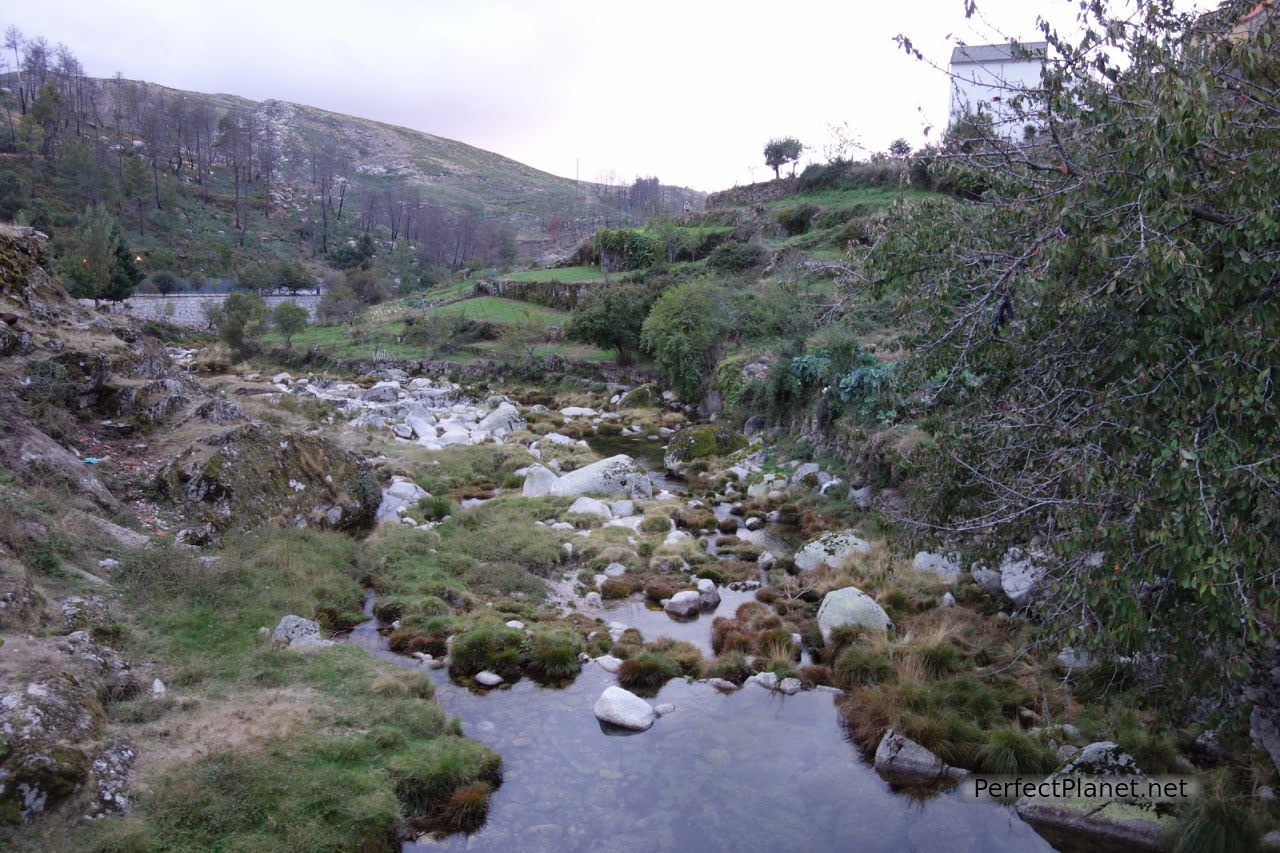
River beach of Sabugueiro
We arrive in Sabuguerio at six o'clock in the evening. It is considered the highest village in Portugal and is situated in the heart of the Serra da Estrela Natural Park. It is famous for its mountain cheese (queijo da serra), smoked ham, rye bread, honey and also items made from local wool. It is also famous for a breed of dog characteristic of the area, the cao da Serra da Estrela.
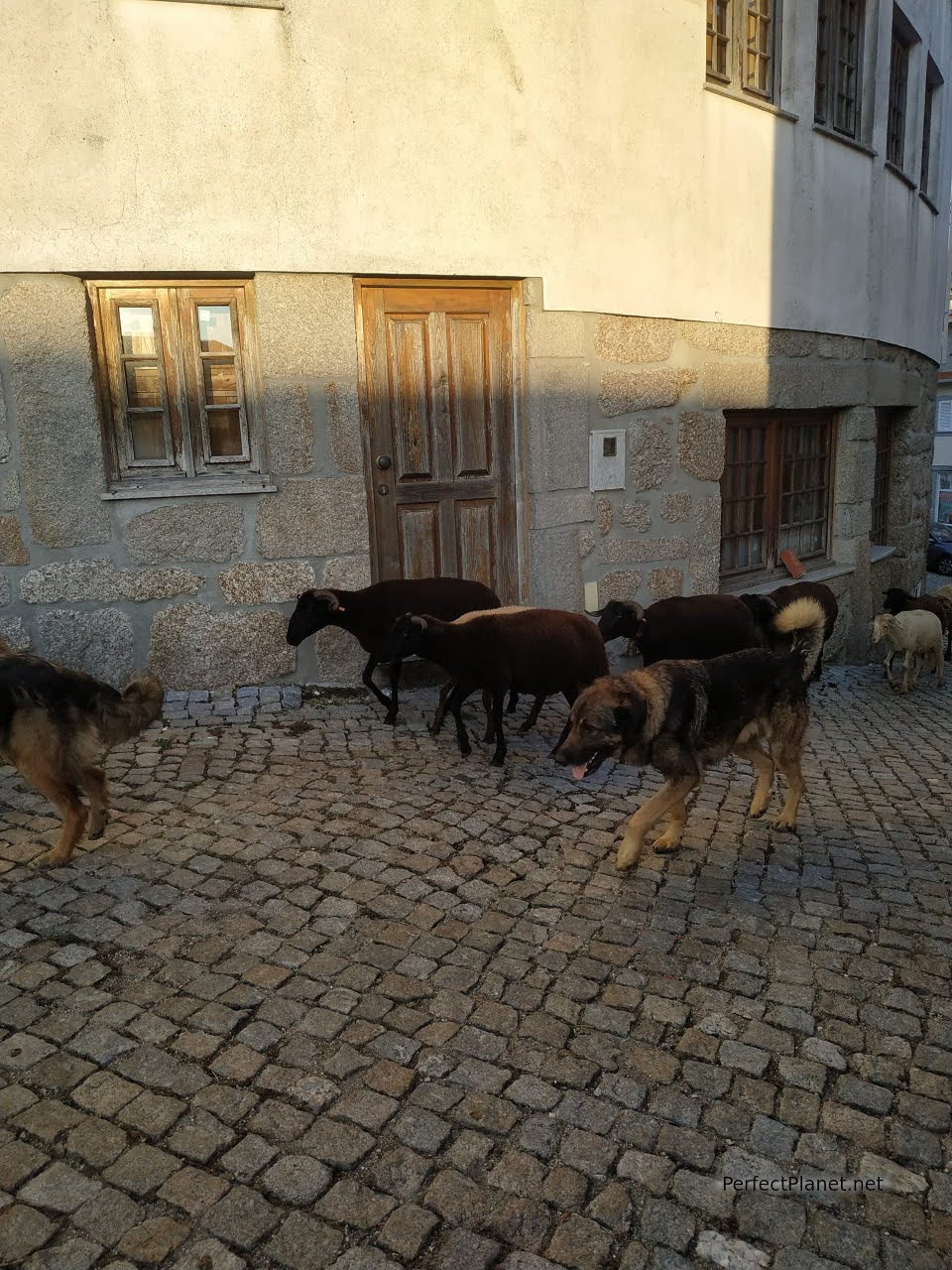
Local dog
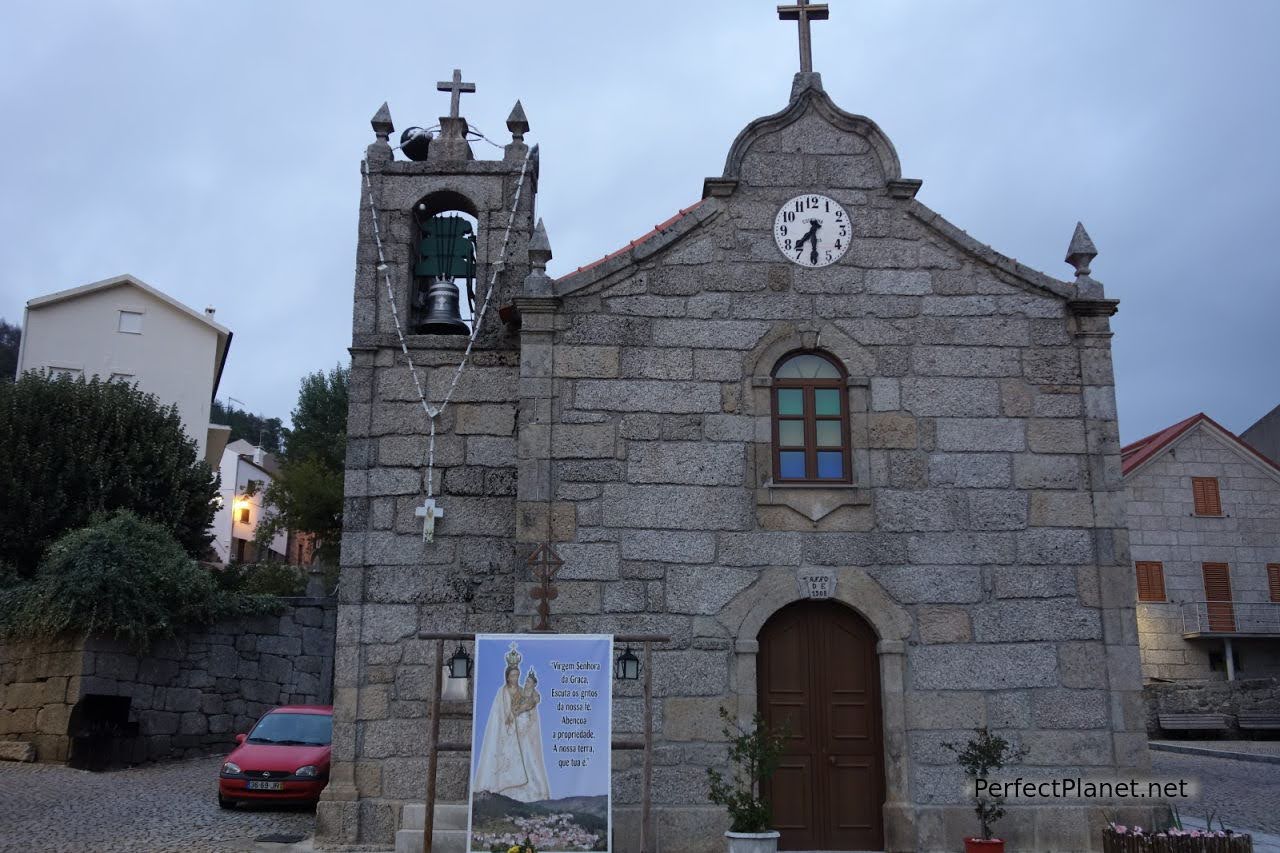
Church in Sabugueiro
They are considered to be one of the oldest native animals of the Iberian Peninsula and although at first frightening as they are huge, they are also friendly and affectionate.
Sabugueiro is a large town with several souvenir shops, a supermarket and some restaurants. Its historic centre is beautiful with cobbled streets, granite houses, a pelourinho, a wash house and a river beach.
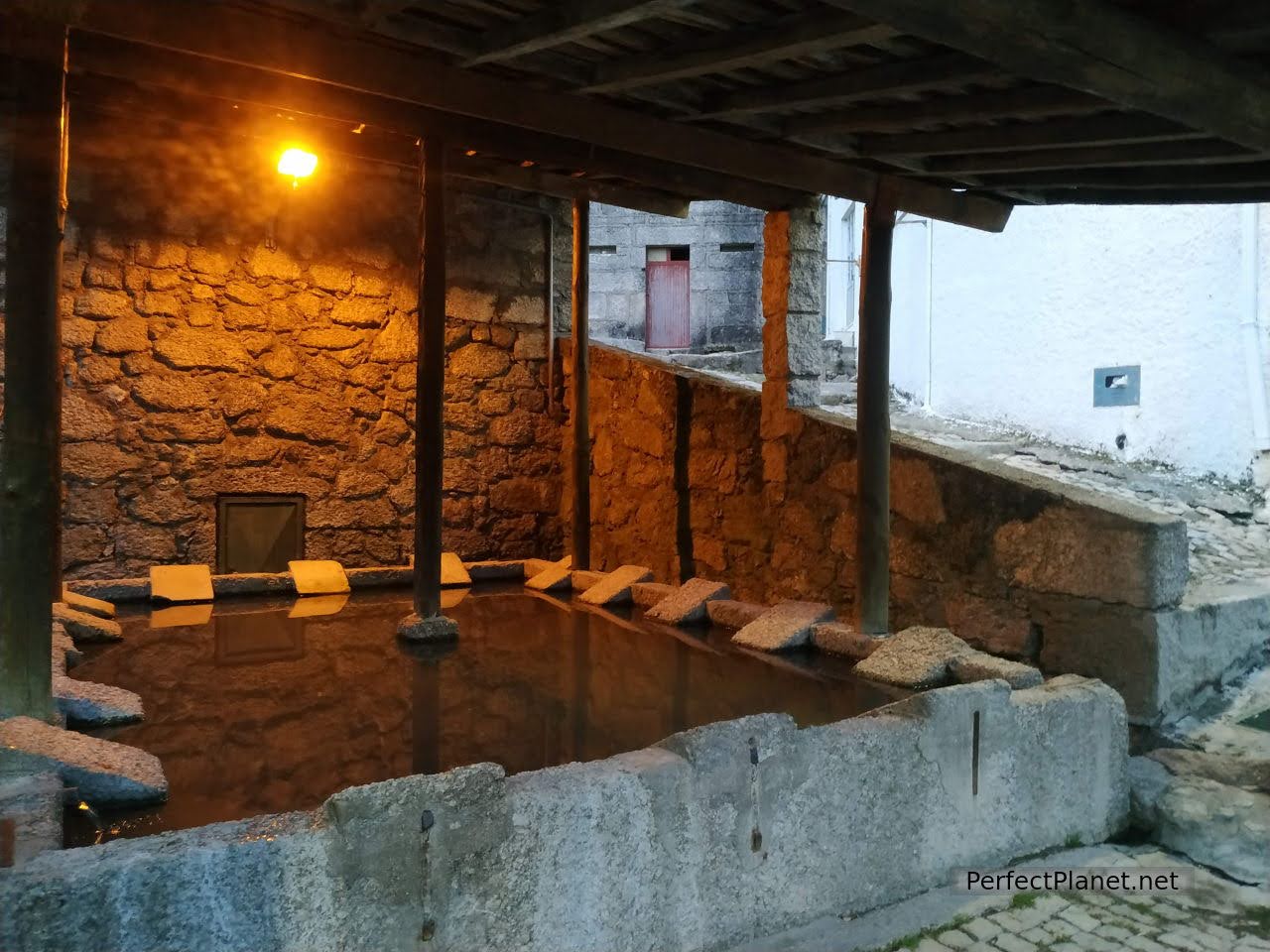
Wash house
A herd of goats welcomes us.
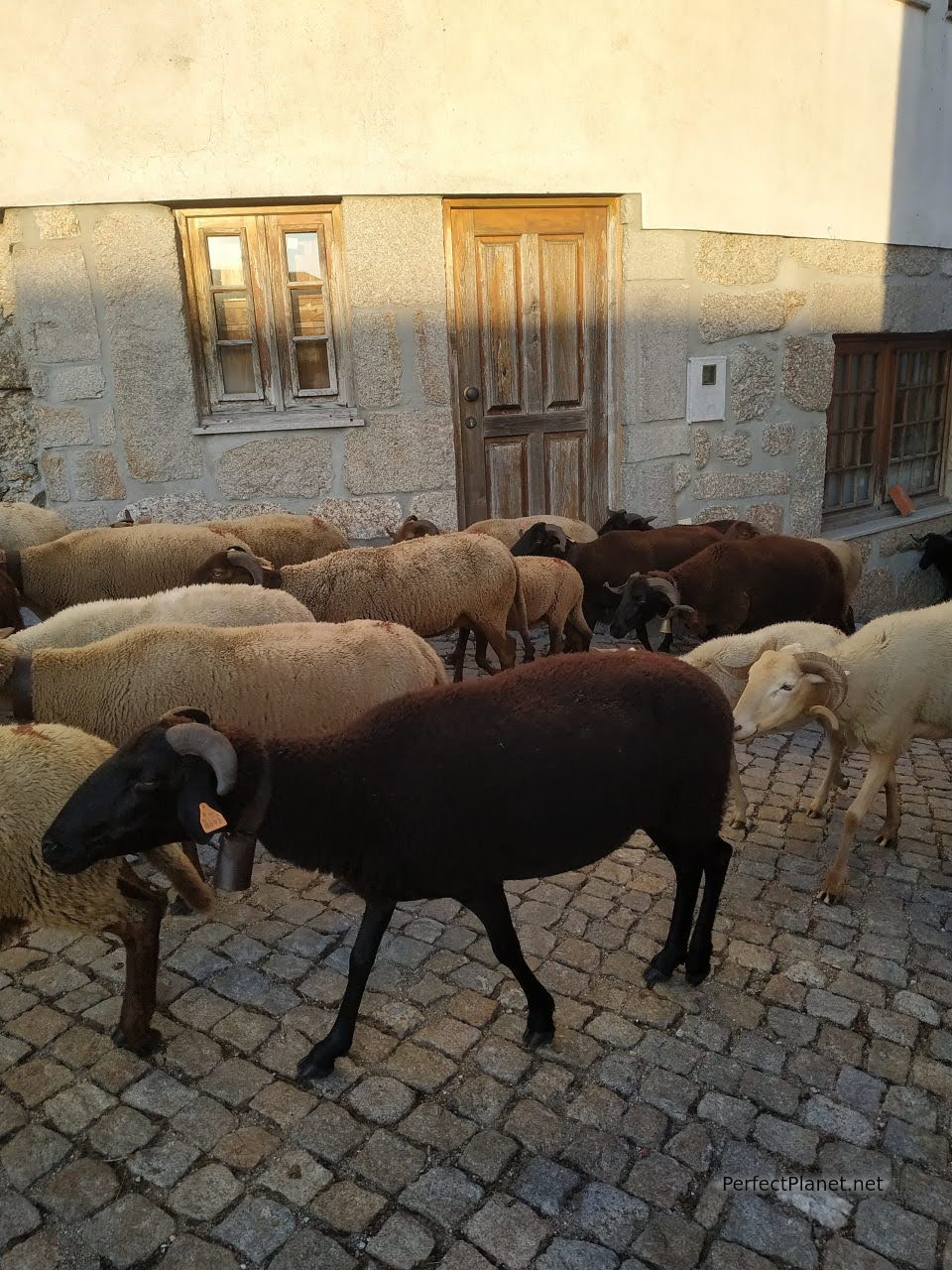
Goats
In Sabugueiro there is plenty of accommodation and it is well located so it will be our base for a few days.
The supermarket is small and closes at 19:00 but has the basics. We bought a few bottles of Cabriz d.o. DAO wine which was delicious.
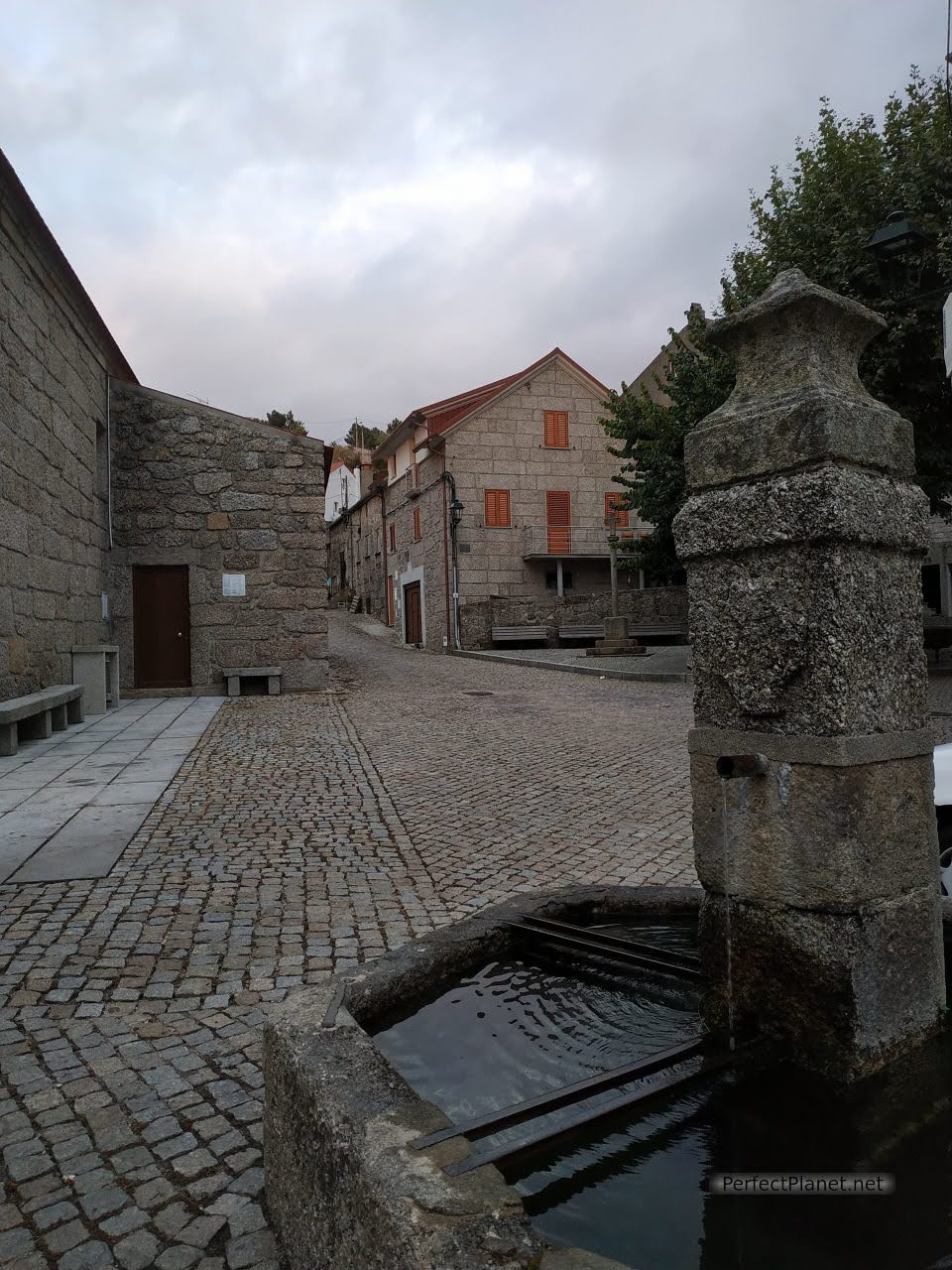
Sabugueiro
We have a beer in the only open bar Café Estrela, in fact it closes as soon as we leave.
We stay at Casa dos Gémeos, a rural house for six people with pellet heating, which is quite nice. The owners have a souvenir shop (O Cruzamento) and we tried an exquisite pumpkin sponge cake and the cheese... without words, spectacular.
Motorway tolls from Vau to Avelar: 5,50€/car and 4,60€/car.
Lunch café A Cueva: 19,60€ 6 pax.
Lunch Água Doce restaurant: 45 €/6pax.
Café Estrela: 5,40€ 6 beers.
Shop O Cruzamento: 9€ wine and sponge cake.
Accommodation: Casa dos Gémeos 95€ 6 pax/night.
- Log in to post comments

